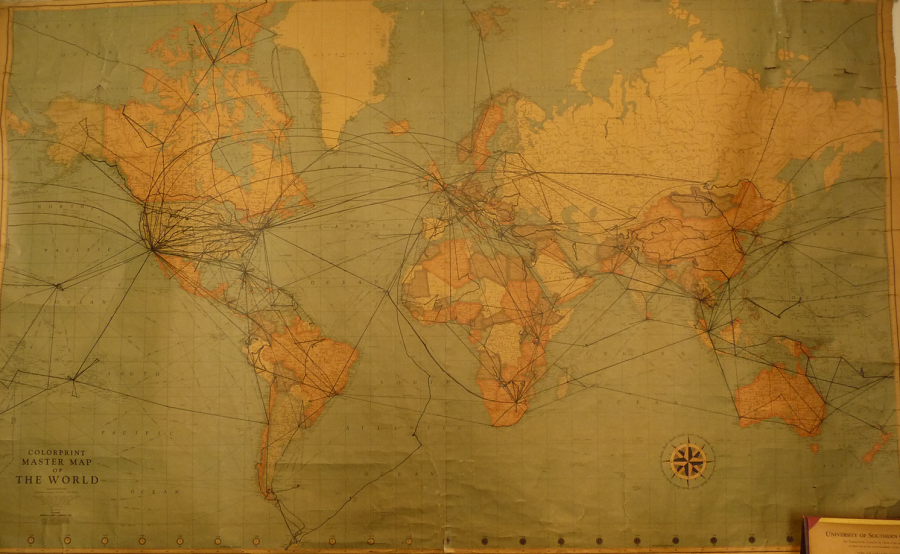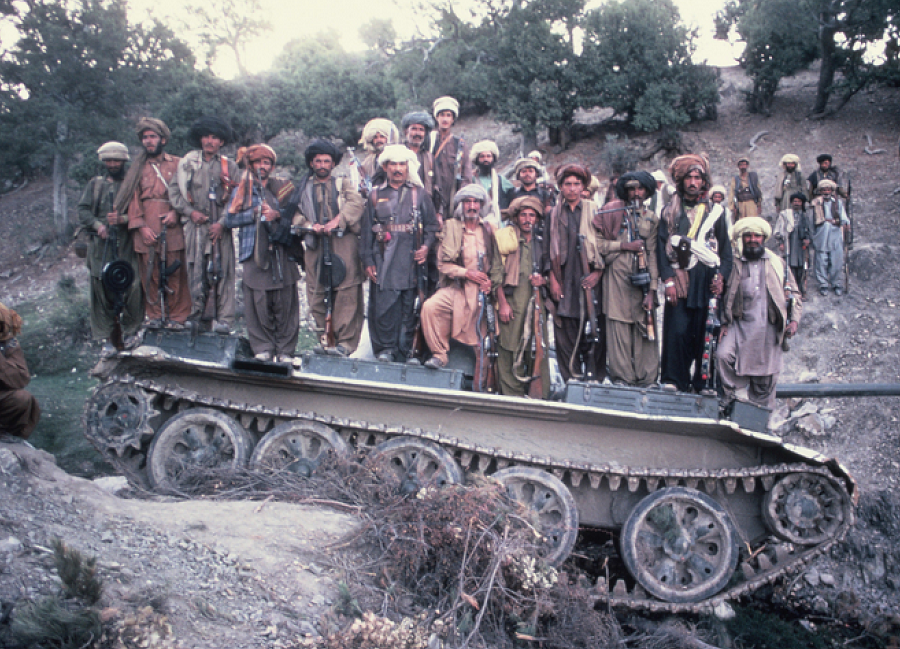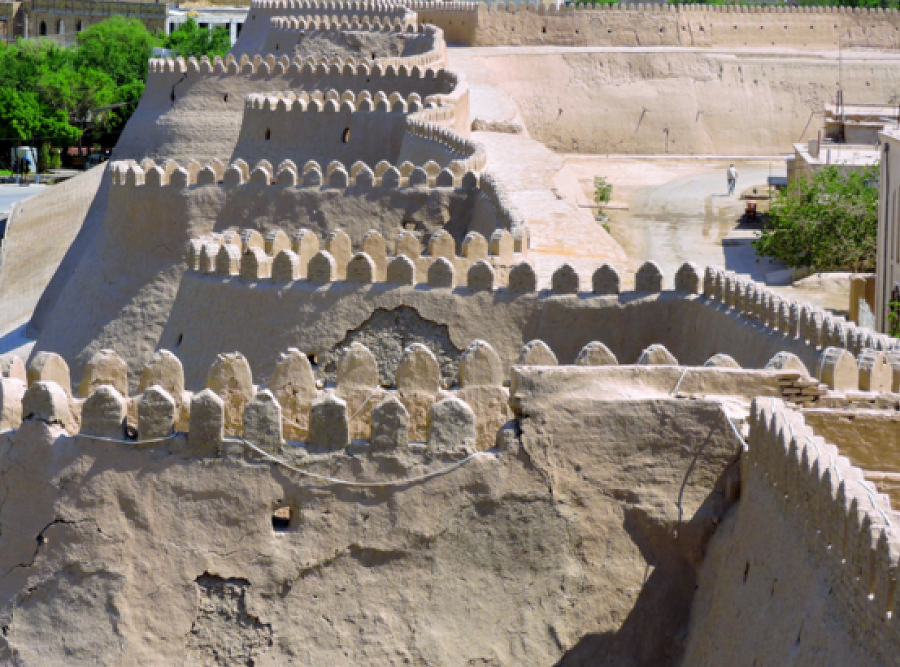Dr. Jack Wheeler
THE CALL OF THE WORLD
As you may know, I’ve had memorable experiences in every country in the world. Ever since I was a young teenager, the world has been calling me to explore it – and I’ve been responding deeply to that call for well over sixty years now.
And yet… and yet… I must confess to you that I’ve barely begun, barely scratched the surface of the wondrousness of our Earth.
There is a literal endlessness to what there is to learn, witness and infuse your soul about the history, culture, people, and sheer magical beauty that surrounds our planet.
Can you feel it – the world calling you to experience and explore it? The call may be loud and persistent. It may be faint, drowned out by the daily humdrum of life – or under the illusion that you’re too old or somehow unable. But however loud or faint, it’s there in most of us – for how else did we humans populate the entire globe? To seek, to know, to experience, to explore is a very deep part of what it is to be a human being.
The Call of the World is part of the glory of being human – of using our unique, unique of all life on earth, capacity for self-consciousness, of our human ability to appreciate and live in gratitude for being a part of this glorious Earth and Universe.
You know that for almost a half-century now that I’ve made a living enabling people to respond to the Call of the World. This year, with the two year-long Dark Covid Winter ending, that response will be in the Himalayas, Central Asia, Atlantic Paradise Islands, and so much more.
I am hoping, of course, that you will be joining me on at least one of these explorations. More than that, however, I want you to answer the Call of the World that most resonates within you.
Is there a forest, a scenic wonder, a historical town or place near you that you haven’t been to and wondered about? Bet there is. What about somewhere nearby that your kids or grandkids don’t know about and would think is very cool?
Whether the Call of the World in you is to the back of beyond or around the corner, life-memorable experiences await once you answer. In all history that’s been or will be, our earthly existence happens only once for a tiny moment in time. I urge you to answer the Call of the World while you still have that time. Carpe diem. (Glimpses of Our Breathtaking World #187 photo ©Jack Wheeler)
REGAINING YOUR SANITY IN A TIME OF MORAL INVERSION
This week, Joel and his family are on a well-deserved vacation in Hawaii. So my turn today.
Every week on TTP Joel Wade gifts us with his wisdom on how to keep your sanity amidst the stresses of life we all experience.
Yet such is the bizarre moral inversion that has been occurring for over eight months now that it has caused some of us to lose their sanity. You cannot keep what you have lost. It must first be found, then you can keep it once more. This is a discussion, then, on how to regain one’s sanity that has been lost.
When one has suddenly become morally demented, factually delusional, and spiritually grotesque; when one suddenly lives in an Orwellian world where slavery is freedom, lies are truth, and evil is good, then one’s sanity has been lost.
Now what if this happens regarding one issue, one set of circumstances in the world – and regarding everything else, one retains their normal moral, factual, and spiritual good sense? What’s going on here?
And what if this happens to people in reverse? To those who on so many issues are morally demented, factually delusional, and spiritually grotesque suddenly become paragons of sanity fully on the side of freedom, truth, and moral decency on one single issue and that alone?
This is the puzzle of moral inversion that needs to be recognized and dealt with, for the issue that is causing it happens to be one of the most dangerous and critically consequential the entire world faces at this very moment. And what is that issue?
FLASHBACK FRIDAY – SERA GOMPA, LHASA TIBET
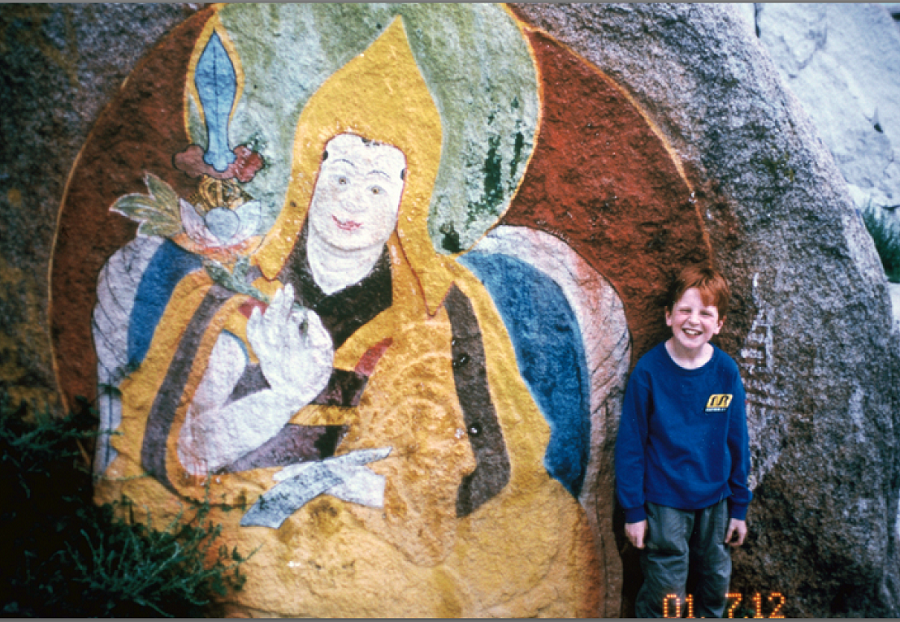 July 12, 2001. I took my son Jackson when he was nine years old on an overland expedition across Tibet this summer. Here he is at the Sera Gompa, a Gelugpa (Yellow Hat) Tibetan Buddhist Monastery just outside Lhasa, Tibet’s capital.
July 12, 2001. I took my son Jackson when he was nine years old on an overland expedition across Tibet this summer. Here he is at the Sera Gompa, a Gelugpa (Yellow Hat) Tibetan Buddhist Monastery just outside Lhasa, Tibet’s capital.
Several hundred monks live here, teaching young acolytes and conducting prayer ceremonies for villagers in the area – albeit under the watchful eye of Chinese Communist government agents. Being here was a very educational experience for Jackson, which he still remembers. Always try to take your kids or grandkids on travel adventures when they are young – they’ll never forget them either.
Another benefit of doing this – particularly with grandchildren – is the exceptional bonding that happens on such adventures. They cement an emotional closeness in a powerful and lasting way. (Glimpses of Our Breathtaking World #236 photo ©Jack Wheeler)
THE POLISH SAVIOR OF WESTERN CIVILIZATION
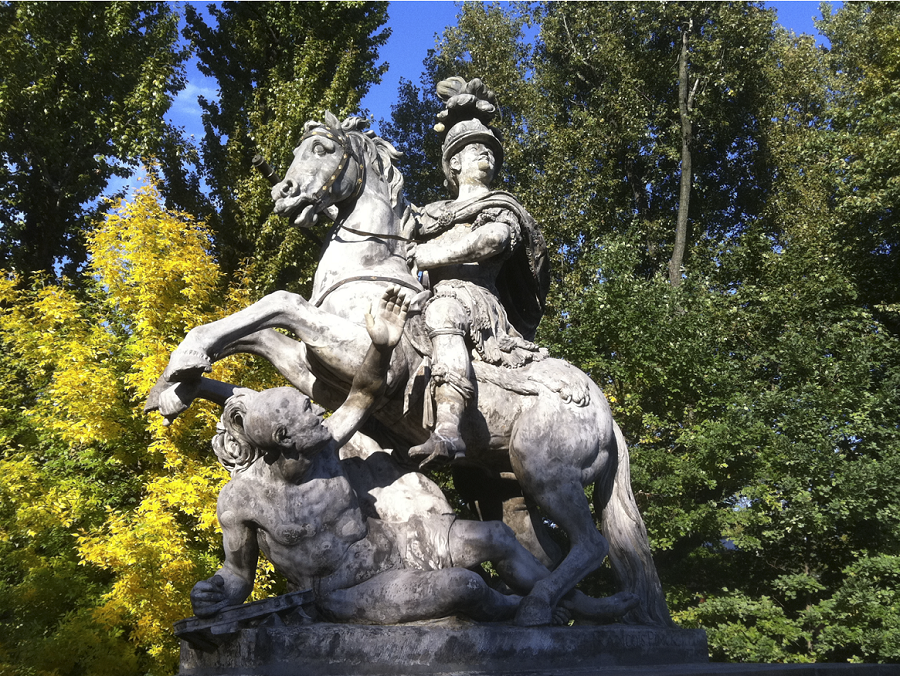 On September 12, 1683, Ottoman Sultan Mehmet IV as the Caliph of all Islam was on the verge of realizing the great Moslem dream of conquering all of Christian Europe for the glory of Allah. The great obstacle in his way – the city of Vienna – was about to be overwhelmed by the Sultan’s gigantic army of 140,000 Islamic Taliban of their day.
On September 12, 1683, Ottoman Sultan Mehmet IV as the Caliph of all Islam was on the verge of realizing the great Moslem dream of conquering all of Christian Europe for the glory of Allah. The great obstacle in his way – the city of Vienna – was about to be overwhelmed by the Sultan’s gigantic army of 140,000 Islamic Taliban of their day.
On the Kahlenberg hilltop above Vienna, the commander of the Christian forces, King Jan III Sobieski of Poland, gave the order to attack. Twenty thousand armed horsemen galloped down the slopes of Kahlenberg, the largest cavalry charge in history, with the Polish King and his Winged Hussars in the lead. The cavalry trampled the Ottomans and made straight for their camps.
Ottoman commander Kara Mustafa fled out of his tent and barely escaped with his life (it didn’t last long – the Sultan ordered him strangled). With the Christian victory at The Battle of Vienna, the Moslem threat to Europe was over. Sobieski wrote a letter to Pope Innocent XI, paraphrasing Julius Caesar:
“Venimus, Vidimus, Deus vincit” – “We came, We saw, God conquered.”
In turn, the Pope hailed Sobieski as “The Savior of Western Christendom.” Indeed he was, and still is so revered by the Polish people to this day – with no apology.
For the people of Poland stand out among those of all Europe for their pride in being part of Western Civilization – symbolized for them by this statue of their Hero King trampling the Ottomans in the beautiful Royal Baths Park in Warsaw. They will make sure visitors to the statue note that underneath the right forearm of the fallen Turkish soldier is a book – the Koran.
You owe it to yourself to visit Poland and meet the Polish champions of Christian liberty, having freed themselves from the Ottomans, the Russians, and the Soviets. We need more like them today. (Glimpses of Our Breathtaking World #159 Photo ©Jack Wheeler)
THE PAINTED CHURCHES OF THE TROODOS MOUNTAINS
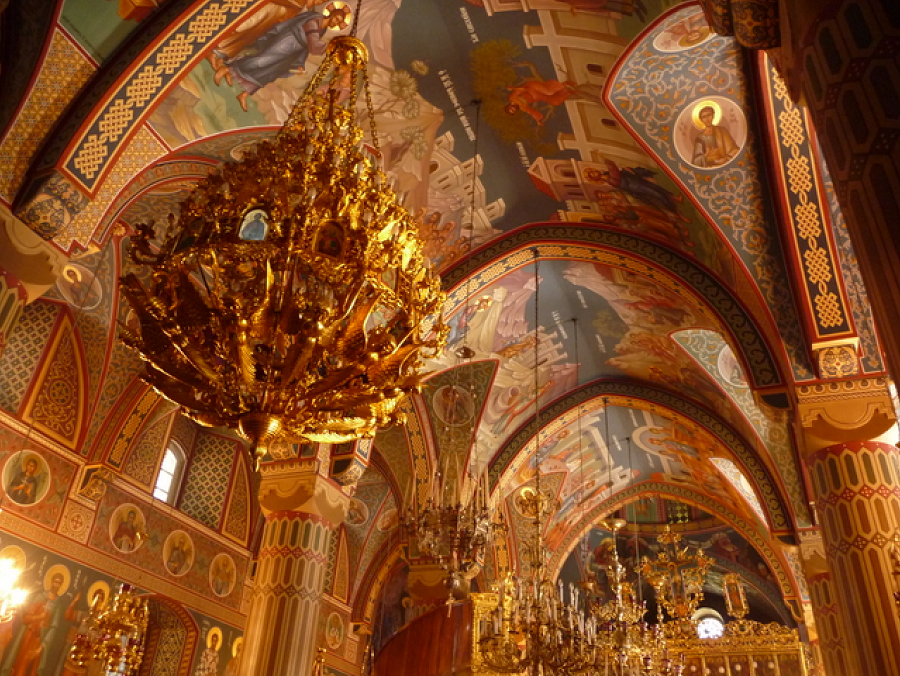 For 500 years, from Ca. 1000 to 1500 AD, the Byzantine Christians on the eastern Mediterranean island of Cyprus labored with love to decorate the interior of their humble churches tucked away in hidden valleys of the Troodos Mountains.
For 500 years, from Ca. 1000 to 1500 AD, the Byzantine Christians on the eastern Mediterranean island of Cyprus labored with love to decorate the interior of their humble churches tucked away in hidden valleys of the Troodos Mountains.
There are a total of 10 such churches which are today a UNESCO World Heritage Site. The one you see here is the church of the Kykkos Monastery, with its extravagantly painted vaulted ceiling preserved immaculately for centuries. Christianity remains very much alive in these mountains. Come here to be awed yourself. (Glimpses of Our Breathtaking World #235 photo ©Jack Wheeler)
THE PARADISE OF ZIHUATANEJO
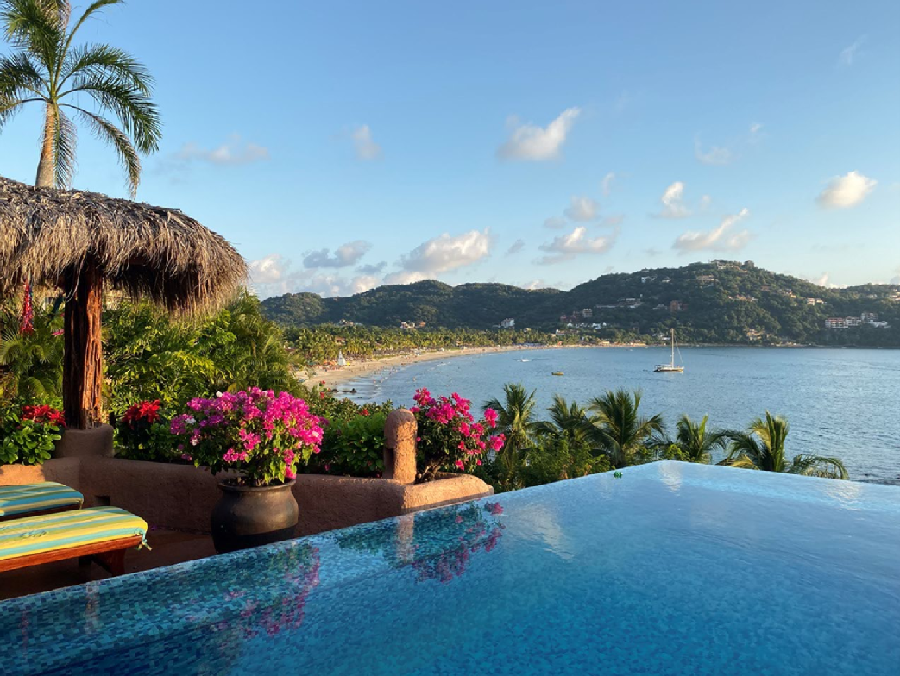 Once a small Mexican fishing village far from everything, Zihuatanejo (zee-wah-tan-ay-ho) – Zee-wat to locals – has become a paradisical escape hatch for many seeking refuge from our pressure-cooker world. 150 miles up the northwest coast of Acapulco, Zee-wat is its own world of peace and serenity.
Once a small Mexican fishing village far from everything, Zihuatanejo (zee-wah-tan-ay-ho) – Zee-wat to locals – has become a paradisical escape hatch for many seeking refuge from our pressure-cooker world. 150 miles up the northwest coast of Acapulco, Zee-wat is its own world of peace and serenity.
Stroll on the beach or along the Paseo del Pescador (Fisherman’s Path) with its shops, bars, and restaurants unbothered. Just relax surrounded by flowers, warm water, and blue sky. All the worries elsewhere in Mexico, much less in the US or anywhere else are not here.
The time to come is now, the dry season November-May. Prices are a bargain with the dollar way up on the peso. Non-stop flights from multiple cities in the US and Canada. Just a few days here will do wonders for your soul. (Glimpses of Our Breathtaking World #182 photo ©Jack Wheeler)
THE TREE OF JESSE
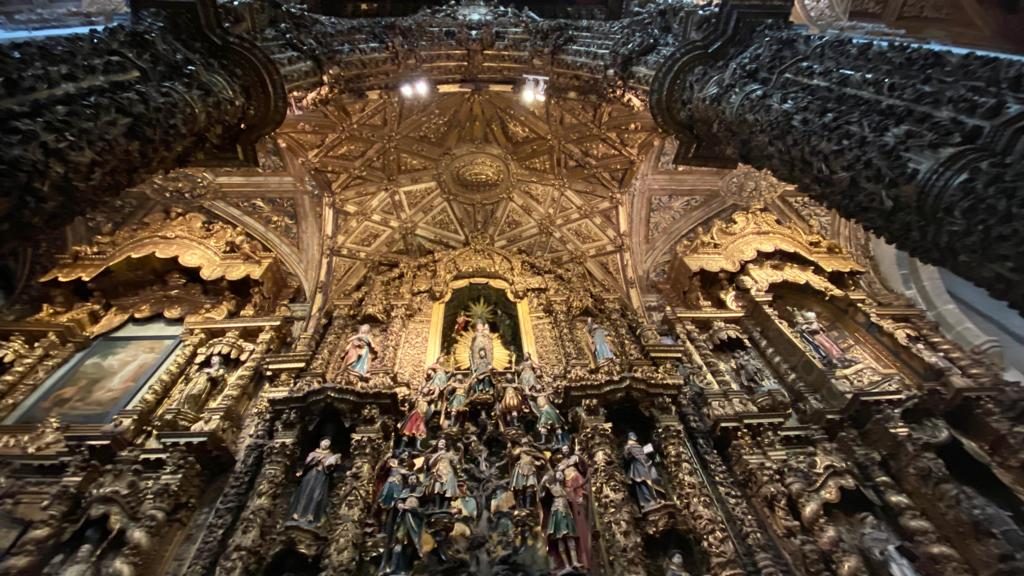 The Igreja de São Francisco (Church of St. Francisco) was built 800 years ago on a ledge overlooking the Douro River in Porto, Portugal. 500 years later in the early 1700s, the people of Porto devoted themselves to making its interior supremely magnificent.
The Igreja de São Francisco (Church of St. Francisco) was built 800 years ago on a ledge overlooking the Douro River in Porto, Portugal. 500 years later in the early 1700s, the people of Porto devoted themselves to making its interior supremely magnificent.
Most breathtaking is the polychrome wood carving depicting The Tree of Jesse springing from the reclining body of Jesse of Bethlehem, the father of King David, and showing the genealogy of Jesus through the branches of the tree that are the Twelve Kings of Judah, ending with Joseph and above him the Virgin and Child. Above the Tree to the ceiling is intricately carved woodwork deeply covered with hundreds of pounds of gold leaf.
This masterpiece of baroque art is an awesome tribute to the importance of Christianity to Western Civilization. To experience the power of this masterpiece yourself, come with us on our next exploration of Portugal this coming March. (Glimpses of Our Breathtaking World #234 photo ©Jack Wheeler)
FLASHBACK FRIDAY – THE TIGER’S NEST OF BHUTAN
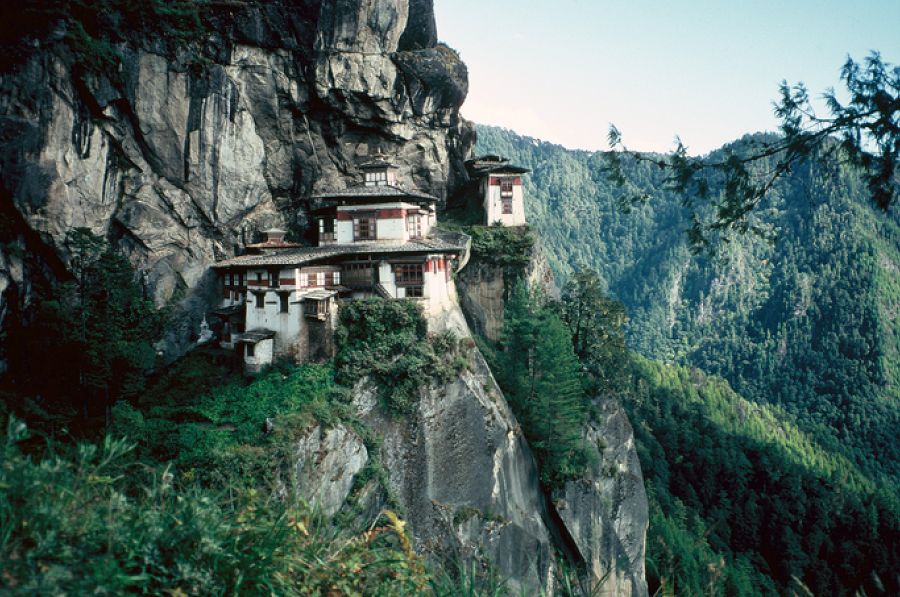 November 1990. The “Tiger’s Nest” or Taktsang monastery is built in front of caves on a vertical cliff-face high above the Paro Valley in the Himalayan Kingdom of Bhutan. Originally a meditation site of the founder of Tibetan Buddhism, Padmasambhava in the 700s, the monastery temples were first constructed in the 1600s.
November 1990. The “Tiger’s Nest” or Taktsang monastery is built in front of caves on a vertical cliff-face high above the Paro Valley in the Himalayan Kingdom of Bhutan. Originally a meditation site of the founder of Tibetan Buddhism, Padmasambhava in the 700s, the monastery temples were first constructed in the 1600s.
Bhutan is arguably the most fabulously exotic country on earth, still adhering to the ancient traditions of Ningma (Red Hat) Tibetan culture. It is quite a steep hike to the Tiger’s Nest but certainly worth it. We’ll be conducting an in-depth exploration of Bhutan this coming November. (Glimpses of Our Breathtaking World #133 Photo ©Jack Wheeler)
HALF-FULL REPORT 10/28/22
 On Wednesday evening (10/26), Elon posted a video of himself marching into Twitter’s San Francisco headquarters physically carrying an actual kitchen sink, then posting: Let that sink in.
On Wednesday evening (10/26), Elon posted a video of himself marching into Twitter’s San Francisco headquarters physically carrying an actual kitchen sink, then posting: Let that sink in.
Then yesterday evening (10/27), immediately after finalizing his personal ownership of Twitter came:
 Freed of what, you may ask. We immediately found out – Musk fired all of Twitter’s top wokesters: CEO Parag Agrawal, hyper-leftie from India; CFO Ned Segal; and General Counsel Sean Edgett, all of who were escorted out of Twitter HQ by security guards. Bret Taylor is no longer Board Chairman, but most important of all, Twitter’s Censorship Czarina, Vijaya Gadde, is gone along with her $17 million-a-year job.
Freed of what, you may ask. We immediately found out – Musk fired all of Twitter’s top wokesters: CEO Parag Agrawal, hyper-leftie from India; CFO Ned Segal; and General Counsel Sean Edgett, all of who were escorted out of Twitter HQ by security guards. Bret Taylor is no longer Board Chairman, but most important of all, Twitter’s Censorship Czarina, Vijaya Gadde, is gone along with her $17 million-a-year job.
It was Indian-born Gadde who ran Twitter’s censorship teams that banned Trump, stymied any mention of China’s Wuhan Lab being the source of Covid, rigorously whitewashed conservatives out of Twitter, and blocked the Hunter Biden Laptop story just before (and thereafter) the 2020 election that caused millions of votes not to swing for Trump.
Good riddance – for that alone, the Twitter Bird is freed.
GRANDMA AND GRANDPA NEED NOT FIGHT IN THE CAUCASUS
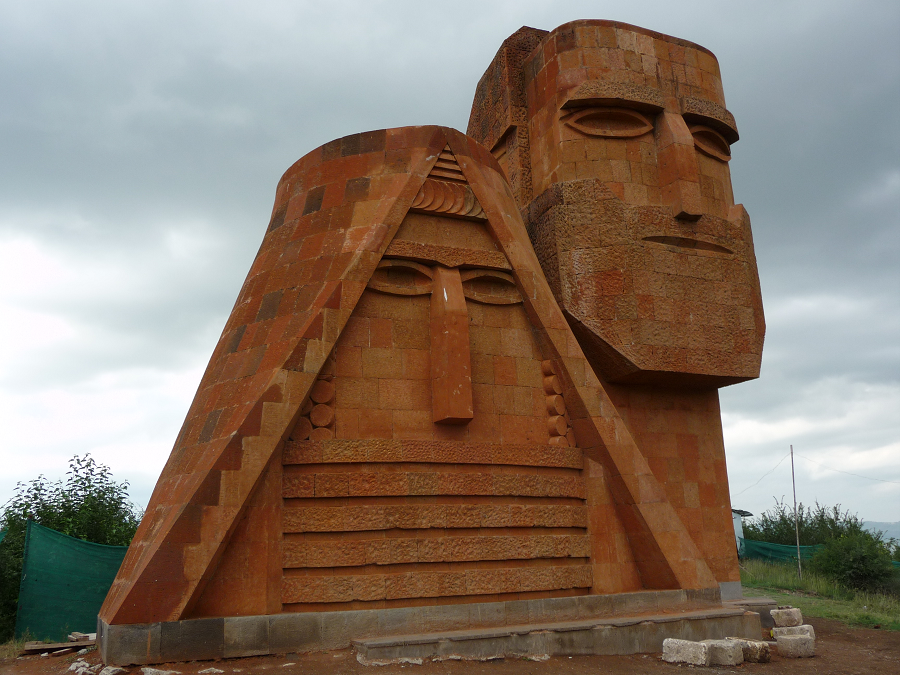 This is “Tatik-Papik” (Grandmother-Grandfather), a stone monument built in Soviet days as homage to the mountain people of the Transcaucasus Highlands of Armenia and Azerbaijan. After both became independent with the fall of the USSR, Armenia seized the Azeri part, known as Nagorno Karabagh. Since late September, war has broken out anew, with Turkey supporting the Azeris and Russia supporting the Armenians.
This is “Tatik-Papik” (Grandmother-Grandfather), a stone monument built in Soviet days as homage to the mountain people of the Transcaucasus Highlands of Armenia and Azerbaijan. After both became independent with the fall of the USSR, Armenia seized the Azeri part, known as Nagorno Karabagh. Since late September, war has broken out anew, with Turkey supporting the Azeris and Russia supporting the Armenians.
The dispute could be settled easily with a “land swap.” There is an exclave of Azerbaijan called Nakhchivan (see The Land of Noah, Glimpse #3) separated by a sparsely inhabited corridor of Armenia called the Mehgri Strip running to the border with Iran. It could be swapped for the Armenian-populated portion of Karabagh. Result: Azerbaijan and Nakhchivan are united and whole, Armenia and Armenian Karabagh are united and whole.
Should be win-win achievable given recent peace agreements achieved by our genius POTUS between Serbia and Kosovo, plus between Israel and the UAE, Bahrain, and Sudan don’t you think? (Glimpses of Our Breathtaking World #71 photo ©Jack Wheeler)
THE FORTRESS OF LUXEMBOURG
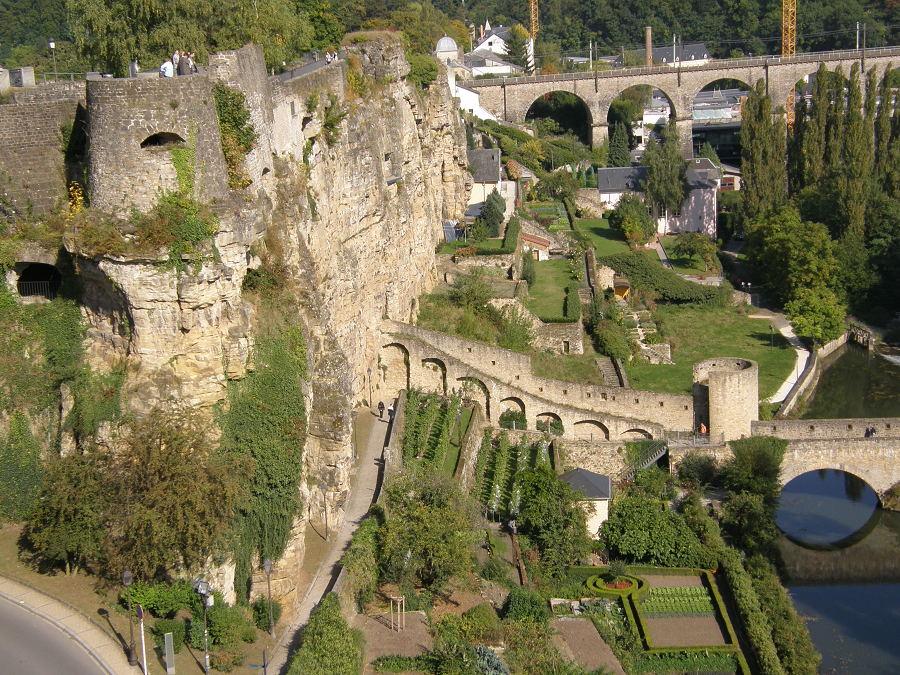 Originally built upon Roman fortifications on a rocky promontory in the 900s by the Counts of Luxembourg, the Luxembourg Fortress gained strategic importance located between the French Kingdom and the Hapsburg Empire. By the 1600s it became so impregnable it was called the “Gibraltar of the North.” It was fought over by so many armies that finally, in establishing the Grand Duchy of Luxembourg’s full independence and neutrality in 1867, Luxembourgers agreed to tear it down.
Originally built upon Roman fortifications on a rocky promontory in the 900s by the Counts of Luxembourg, the Luxembourg Fortress gained strategic importance located between the French Kingdom and the Hapsburg Empire. By the 1600s it became so impregnable it was called the “Gibraltar of the North.” It was fought over by so many armies that finally, in establishing the Grand Duchy of Luxembourg’s full independence and neutrality in 1867, Luxembourgers agreed to tear it down.
What you see here is what is left, and is now a World Heritage Site. The Chemin de la Corniche – the promenade along the top of the ramparts overlooking Alzette River and the Old City – is renowned as “Europe’s most beautiful balcony.”
Wedged between France, Belgium, and Germany, small 1,000 square-mile Luxembourg is a haven of peaceful beauty. Come here to stand on these ramparts to experience it yourself. (Glimpses of Our Breathtaking World #233 photo ©Jack Wheeler)
THE WORLD’S MOST UNIQUE BIRD
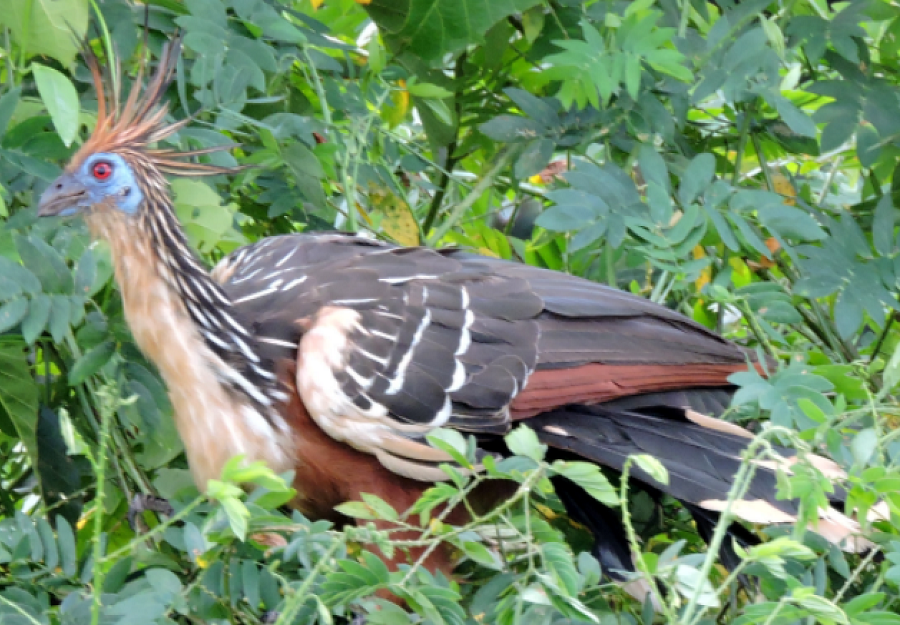 This is a Hoatzin. I took this picture in the Amazon jungles of Colombia, its native habitat. It has no genetic relationship to any other bird, and thus has its own family, the Opisthocomidae, and its own suborder, the Opisthocomi. Extensive DNA-sequencing demonstrates that “the hoatzin is the last surviving member of a bird line that branched off in its own direction 64 million years ago, shortly after the extinction event that killed the non-avian dinosaurs.”
This is a Hoatzin. I took this picture in the Amazon jungles of Colombia, its native habitat. It has no genetic relationship to any other bird, and thus has its own family, the Opisthocomidae, and its own suborder, the Opisthocomi. Extensive DNA-sequencing demonstrates that “the hoatzin is the last surviving member of a bird line that branched off in its own direction 64 million years ago, shortly after the extinction event that killed the non-avian dinosaurs.”
The Hoatzin is the Dinosaur Bird, the only bird on earth directly descended from the dinosaurs. It makes weird noises – grunts, hisses, groans and croaks – no melodious birdsongs. It emits an awful smell due to its fermentation digestive system, and tastes just as awful so no one hunts it for food. Yet it is distinctively pretty in a hyper-funky way. Spend enough time exploring the Amazon, and you may be lucky to see one. (Glimpses of Our Breathtaking World #186 photo ©Jack Wheeler)
THE CARRICK-A-REDE ROPE BRIDGE
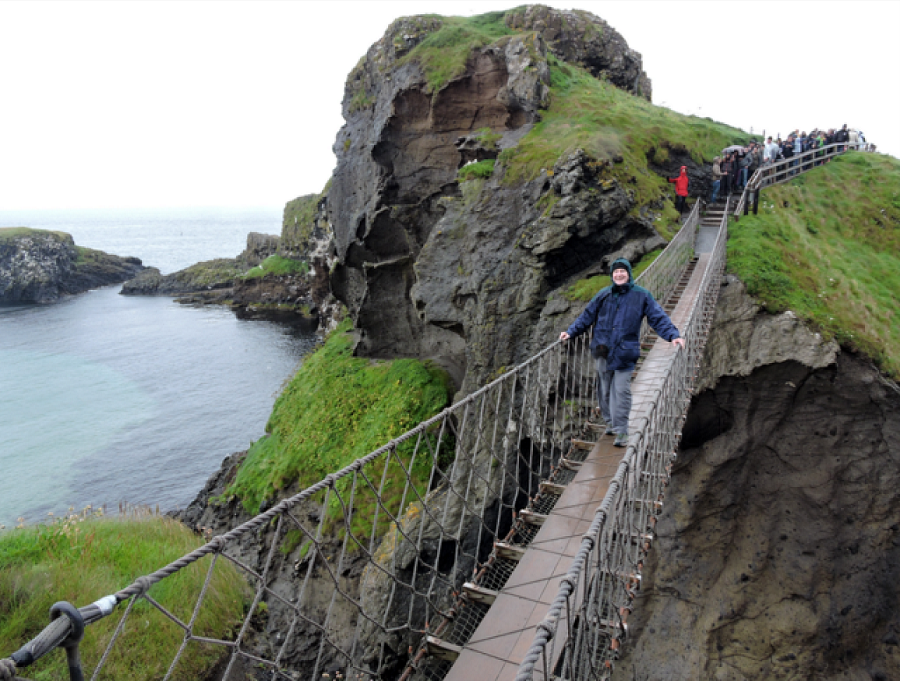 One of the most dramatic sights along the Antrim Coast of Northern Ireland is the Carrick-a-Rede Rope Bridge. Originally built in the 1660s by salmon fishermen to get to their nets on the tiny islet of Carrick, it spans 70 feet across and 100 feet above the ocean waters surging below. It’s still used by the fishermen to this day. And while it’s been sturdily reinforced since it was a simple rope bridge, it’s still an invigorating experience to negotiate – especially in the wind and rain when I was there. Don’t pass it up if you’re ever in Northern Ireland. (Glimpses of Our Breathtaking World #232 photo ©Jack Wheeler)
One of the most dramatic sights along the Antrim Coast of Northern Ireland is the Carrick-a-Rede Rope Bridge. Originally built in the 1660s by salmon fishermen to get to their nets on the tiny islet of Carrick, it spans 70 feet across and 100 feet above the ocean waters surging below. It’s still used by the fishermen to this day. And while it’s been sturdily reinforced since it was a simple rope bridge, it’s still an invigorating experience to negotiate – especially in the wind and rain when I was there. Don’t pass it up if you’re ever in Northern Ireland. (Glimpses of Our Breathtaking World #232 photo ©Jack Wheeler)
FLASHBACK FRIDAY – CANNIBAL TREEHOUSE
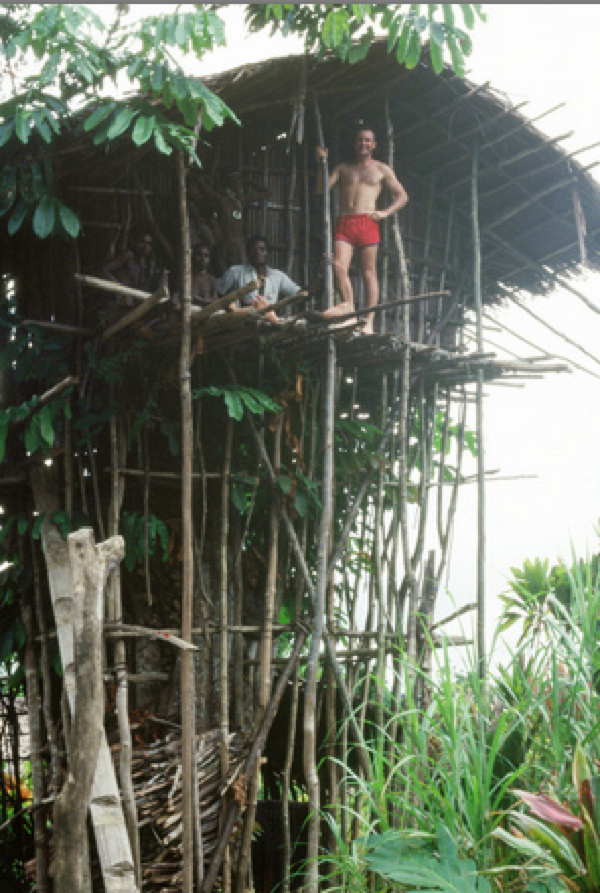 August 1977. High in the mountains above the source of the April River, a tributary of the Sepik in Papua New Guinea, I had a First Contact with an undiscovered tribe calling themselves the Wali-ali-fo. They ate “man long pig,” cooked human meat and lived in thatch dwelling built up in trees. Here I am in one with my Sepik guide Peter who got me here.
August 1977. High in the mountains above the source of the April River, a tributary of the Sepik in Papua New Guinea, I had a First Contact with an undiscovered tribe calling themselves the Wali-ali-fo. They ate “man long pig,” cooked human meat and lived in thatch dwelling built up in trees. Here I am in one with my Sepik guide Peter who got me here.
Peter translated a description of their practice: “When a man dies, we take a pig to his wife and exchange it for the body of the man. We take the body out into the forest and…cook ‘im eat ‘im. We do this so the man will continue to live in the bodies of his friends.”
Not something we’ll do but something we can understand, yes? These are people we could laugh and joke with, tell stories with, enjoy being with. A very different culture, but human all the same. (Glimpses of Our Breathtaking World #148 Photo ©Jack Wheeler)
HALF-FULL REPORT 10/21/22
One of the favorites from their 1967 Sgt. Pepper’s Lonely Hearts Club Band album, Getting Better is the theme of this week’s HFR… at last.
We’ve got 18 days to go before America’s Do or Die Day of Nov 8 – and while there still may be many a slip ‘twixt cup and lip, it’s looking good for the good guys, while those on the Dark Side of the Force are sliding into ever deeper gloom. Yes, for every day this week, it’s getting better all the time.
BIRTHPLACE OF A GODDESS
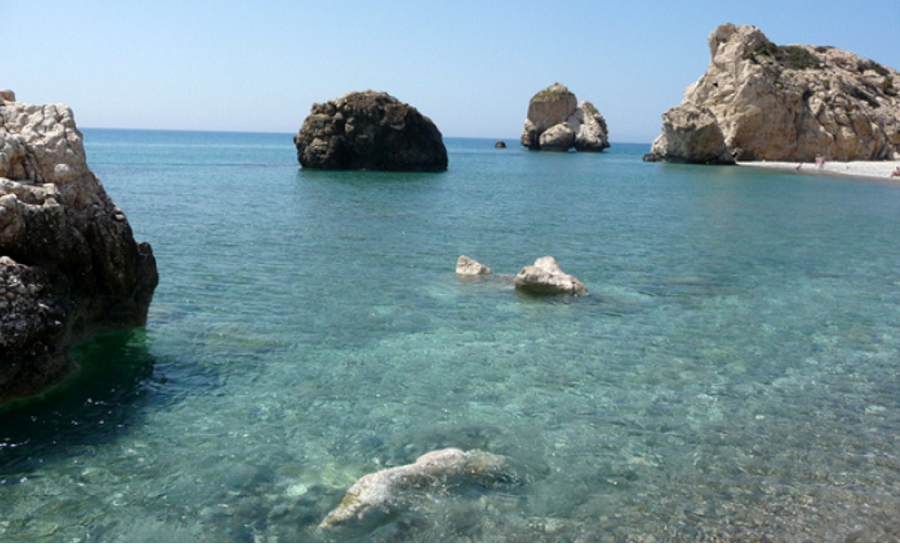 This is the Rock of Aphrodite – where Greek mythology says the Goddess of Love was born fully formed from the sea-foam surging around it – and makes Cyprus the Island of Love. It is south of Paphos on the island’s west coast.
This is the Rock of Aphrodite – where Greek mythology says the Goddess of Love was born fully formed from the sea-foam surging around it – and makes Cyprus the Island of Love. It is south of Paphos on the island’s west coast.
Adjacent is the Temple Sanctuary of Aphrodite, where pilgrims came from every Greek city and kingdom for 2,000 years to worship her. The ancient Greeks prayed to Aphrodite more than any of their other gods, for she was the apotheosis of love, desire, and fertility or having children. Which explains why today couples travel from all over the world to get married here.
Folks have been living in Cyprus for a really long time. So long that they were the first people in the world to domesticate cats over 9,000 years ago. A Neolithic village has been unearthed called Choirokoitia that’s surprisingly sophisticated for being 8,000 years old. In Roman times, after Jesus rose Lazarus from the dead, he went to Cyprus -- there is a beautiful church, the Agios Lazaros, built over his tomb.
The Painted Churches of Troodos are adorned with magnificent medieval art. The ruins of a Crusaders’ fortress inspired the fairy tale castle of Walt Disney’s Snow White. I hope Cyprus’ inspirational history will inspire you to explore it someday. (Glimpses of Our Breathtaking World #101 photo ©Jack Wheeler)
PENA PALACE
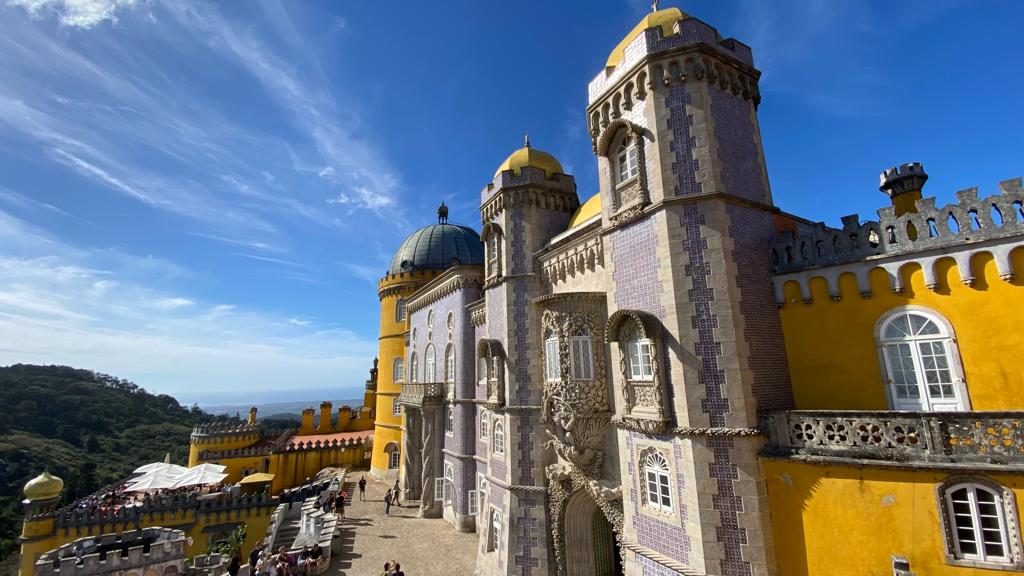 Built as the summer residence of the Portuguese Royal family almost 200 years ago, Pena Palace stands atop the highest hill of the Sintra mountains with stunning views of the Atlantic Ocean far below.
Built as the summer residence of the Portuguese Royal family almost 200 years ago, Pena Palace stands atop the highest hill of the Sintra mountains with stunning views of the Atlantic Ocean far below.
Today a museum showpiece and World Heritage Site, it is one of the most spectacular castles in all Europe. I am here with your fellow TTPers completing another marvelous exploration of the wondrous land of Portugal. We’ll be here again next Spring - hope you’ll be with us. (Glimpses of Our Breathtaking World #231 photo ©Jack Wheeler)
THE WORLD’S MOST BEAUTIFUL BOOKSTORE
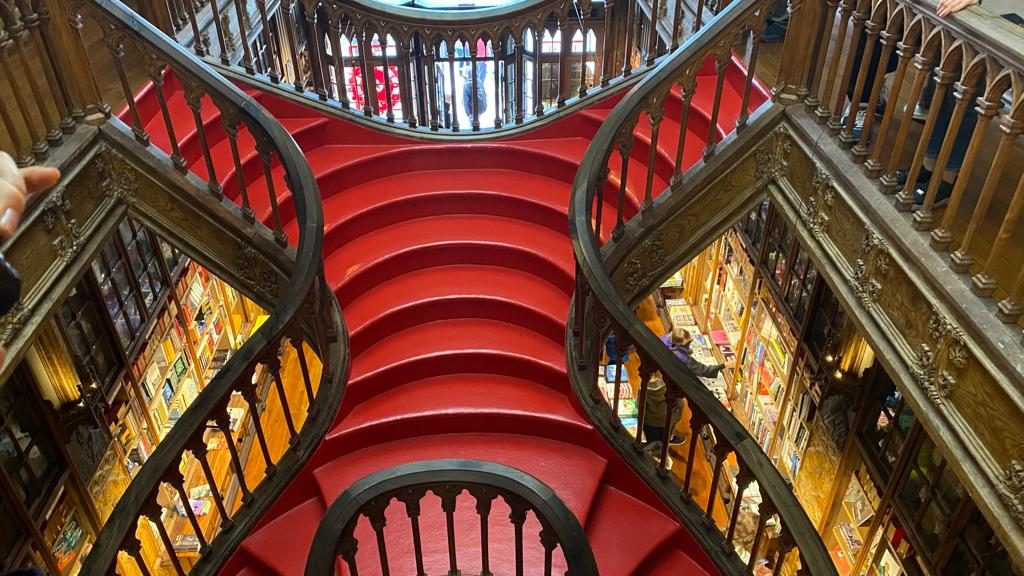 This is the Livraria Lello bookstore in Porto, Portugal where I am right now. Built in 1906, its Neo-Gothic/Art Noveau architecture and design make it the world’s most beautiful place to buy books. Not only was J.K. Rowling inspired to write her Harry Potter books here, but she based the dramatic staircase at Hogwarts on the work of art staircase at “The Lello” that you see above. Porto oozes with such beauty, charm, and entrancement. You deserve to experience it for yourself. (Glimpses of Our Breathtaking World #230 photo ©Jack Wheeler)
This is the Livraria Lello bookstore in Porto, Portugal where I am right now. Built in 1906, its Neo-Gothic/Art Noveau architecture and design make it the world’s most beautiful place to buy books. Not only was J.K. Rowling inspired to write her Harry Potter books here, but she based the dramatic staircase at Hogwarts on the work of art staircase at “The Lello” that you see above. Porto oozes with such beauty, charm, and entrancement. You deserve to experience it for yourself. (Glimpses of Our Breathtaking World #230 photo ©Jack Wheeler)
WHERE AN ANCIENT WONDER ONCE WAS
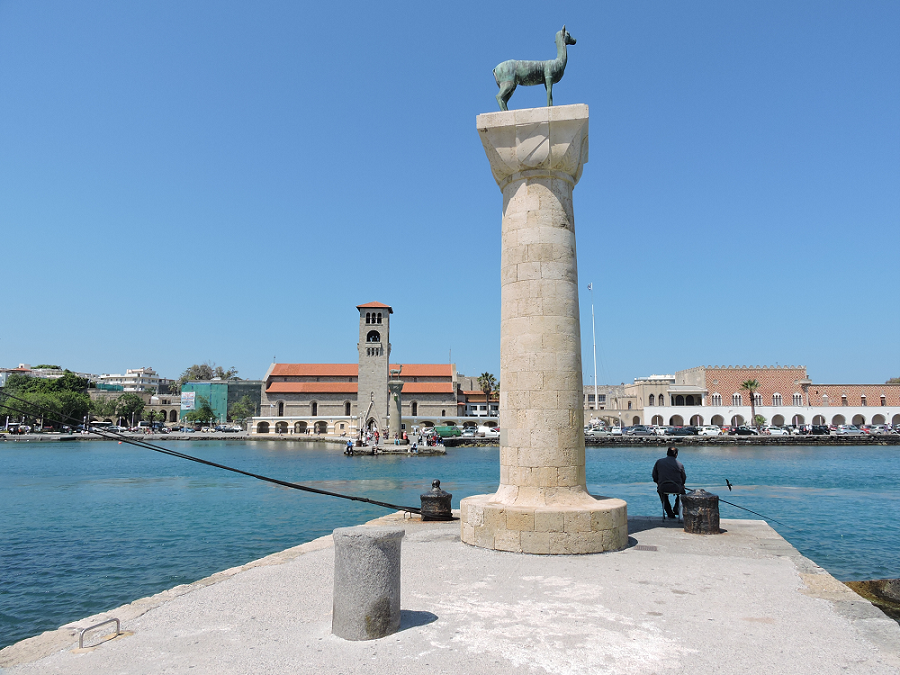 This is where The Colossus of Rhodes once stood, at the entrance to the Old Harbor of Rhodes. Standing as high as today’s Statue of Liberty – 108 feet from feet to crown – it was of the Greek god of the Sun, Helios. Completed in 280 BC, travelers from all over the Mediterranean flocked to see it – as they did all Seven Wonders of their world.
This is where The Colossus of Rhodes once stood, at the entrance to the Old Harbor of Rhodes. Standing as high as today’s Statue of Liberty – 108 feet from feet to crown – it was of the Greek god of the Sun, Helios. Completed in 280 BC, travelers from all over the Mediterranean flocked to see it – as they did all Seven Wonders of their world.
They marveled at the Great Pyramid of Cheops and the Lighthouse of Pharos at the entrance to Alexandria, both in Ptolemaic Egypt; the massive Tomb of King Mausolus or Mausoleum at Halicarnassus and the Temple of Artemis at Ephesus, on the Ionian (western) coast of present-day Turkey; the giant Temple of Zeus at Olympia in mainland Greece; and the Hanging Gardens of Babylon – in addition to The Colossus on the Greek island of Rhodes, now still Greek right off the coast of Turkey.
The Colossus only stood for sixty years, and was then toppled by a great earthquake. One by one, the others were destroyed by earthquakes, floods, fires and other disasters, until only one of the Seven is left – the Great Pyramid, already over 2,000 years old when the other six were built.
All seven sites where the wonders stood are worth visiting today. We’ll be organizing such an exploration soon. (Glimpses of Our Breathtaking World #132 Photo ©Jack Wheeler)
FLASHBACK FRIDAY: AMAZON INITIATION
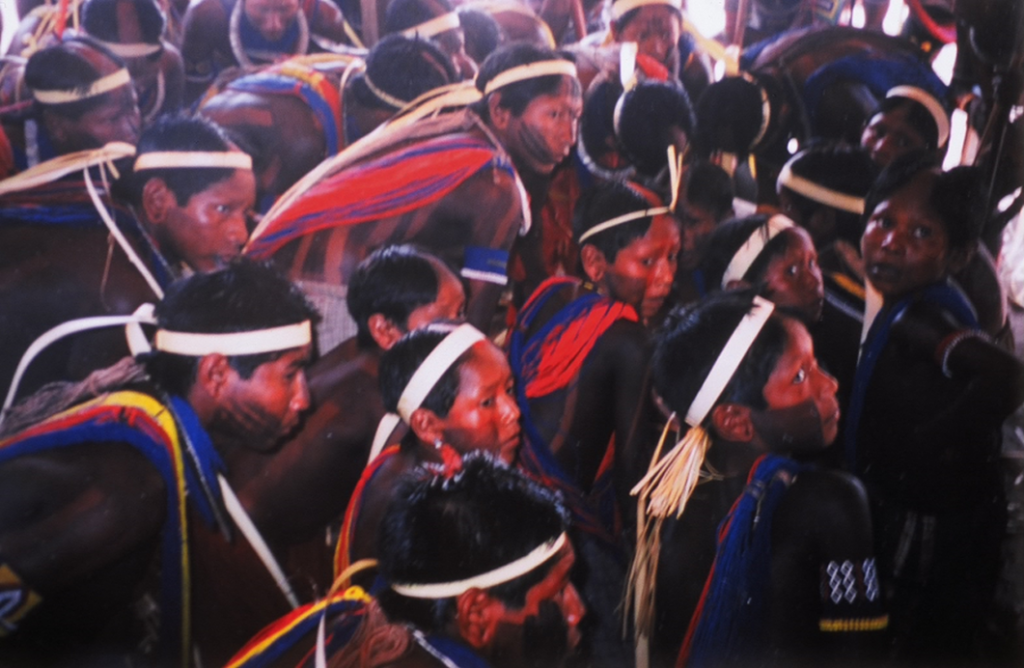 August, 2002. In the remotest Amazon jungle of Brazil, along a tributary of the Upper Xingu River, live the Xicrin-Kayapo people. They live traditionally as they have for centuries, isolated in their forests from the world. Here the young boys, painted and adorned, apprehensively await their initiation ceremonies into becoming young men. They are to be tested to show they have what it takes for the village to be proud of them.
August, 2002. In the remotest Amazon jungle of Brazil, along a tributary of the Upper Xingu River, live the Xicrin-Kayapo people. They live traditionally as they have for centuries, isolated in their forests from the world. Here the young boys, painted and adorned, apprehensively await their initiation ceremonies into becoming young men. They are to be tested to show they have what it takes for the village to be proud of them.
In some of their eyes, there is confidence. In others less so. This is an ancient Rite of Passage, an enthralling experience to witness. (Glimpses of Our Breathtaking World #229 photo ©Jack Wheeler)
A KYRGHIZ EAGLE HUNTER
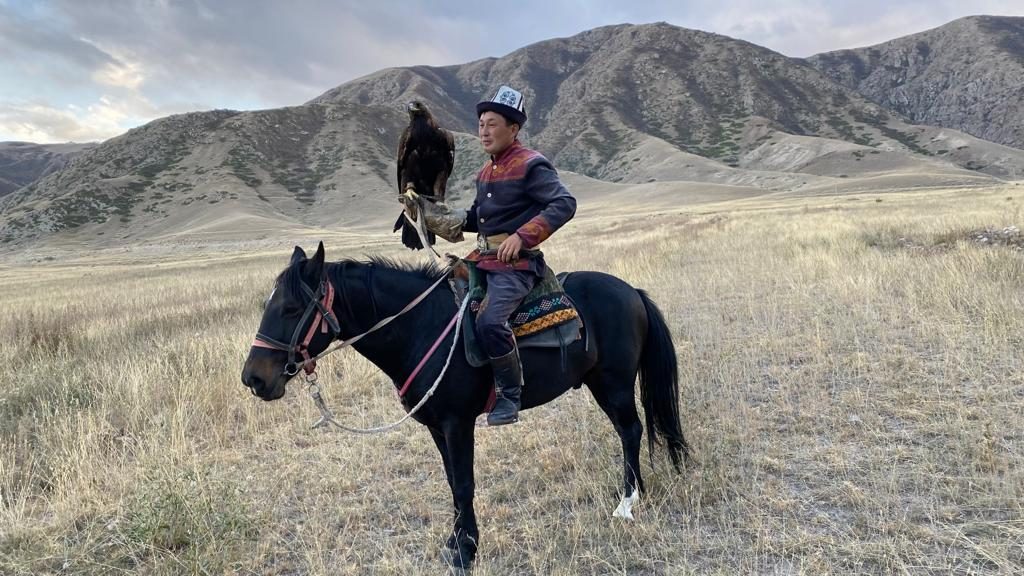 A Kyrghiz eagle-hunter doesn’t hunt for eagles to eat. He hunts with an eagle he has trained from infancy to hunt food for his family.
A Kyrghiz eagle-hunter doesn’t hunt for eagles to eat. He hunts with an eagle he has trained from infancy to hunt food for his family.
Female eagles adapt to training the best and are fierce huntresses. Retrieved as a young chick from their mother’s nest when she’s out hunting, it takes one or two years to train them. The eagle the hunter is holding is age six. When they are too old to hunt at around age 20, they are released back into the wild, where they can live free for up to age 50.
That would be among the high rock outcroppings dotting the high grasslands of Kyrghizstan in Central Asia. That’s where the hunter’s assistant (usually his son) climbs up with the eagle gripping his forearm high enough to launch. Upon the hunter waves thee command on horseback, the hood is removed from the eagle’s head so he can see and is released.
Soaring high, the eagle searches for game like rabbits which are plentiful in the grasslands. Upon spotting one, the eagle swoops down to snare it on the run with her amazingly powerful talons. Allowing her to eat a bite or two as her reward, she’s re-hooded and the rabbit soon to be on the family dinner table. If you want to see this for yourself, come with us to Kyrghizstan on our next exploration of Central Asia. (Glimpses of Our Breathtaking World #228 photo ©Jack Wheeler)
THE DEAD MAN’S HAND
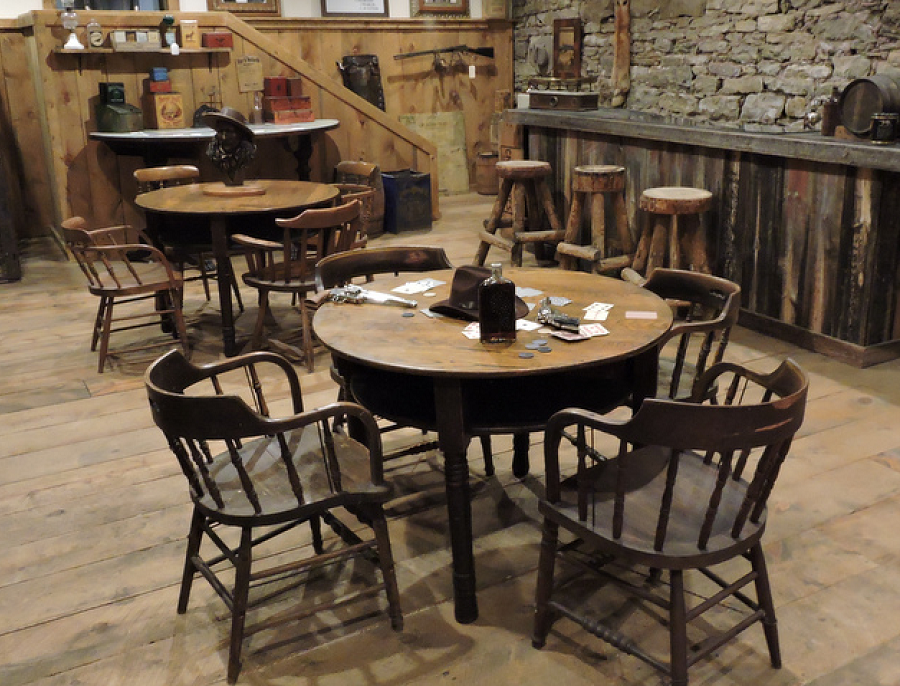 This is where Wild Bill Hickok was shot and killed by assassin Jack McCall on August 2, 1876 in Deadwood, South Dakota.
This is where Wild Bill Hickok was shot and killed by assassin Jack McCall on August 2, 1876 in Deadwood, South Dakota.
The No. 10 Saloon is where Hickok had been playing five card draw that day. He was uncomfortable with his back to the bar (the furthest chair in the photo) and asked another player, Charlie Rich, twice if he could switch seats so his back would be to the wall behind – and twice Rich refused (the chair on the left).
A miner who had lost at cards with Hickok so badly that Wild Bill gave him money to eat, Jack McCall, came in, walked to the bar behind Hickok seeming to ask for a drink, and suddenly without warning pulled his pistol shot Wild Bill in the back of the head, killing him instantly.
Four cards in Hickok’s hand were showing – two black aces and two black eights, forever to be known as The Dead Man’s Hand. (The fifth or hole card was down and is not known.)
McCall was hung for the murder, buried with the noose still around his neck. Hickok is reverentially interred at Deadwood’s Mount Moriah Cemetery with a large bronze monument immortalizing the single most renowned man for whom the Wild West was named – James Butler “Wild Bill” Hickok. (Glimpses of Our Breathtaking World #227 photo ©Jack Wheeler)
TODAY, OCTOBER 12, IS A CELEBRATION OF WESTERN CIVILIZATION
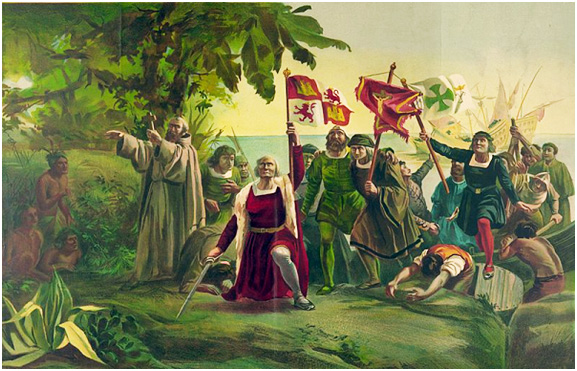 TODAY, October 12, is the 530th anniversary of Christopher Columbus' landing on Guanahani (now known as San Salvador or Watlings) island in the Bahamas on October 12, 1492.
TODAY, October 12, is the 530th anniversary of Christopher Columbus' landing on Guanahani (now known as San Salvador or Watlings) island in the Bahamas on October 12, 1492.
We commemorate this as a true discovery in contrast to all the claims of Vikings, Chinese, Irish, and others who supposedly came earlier – for once and only after Columbus discovered America, it stayed discovered.
Unfortunately, Columbus Day is for most Americans just an excuse for a three-day weekend, which is why it fell ereyesterday, Monday, October 10.
What it should be is a commemoration and celebration of Western Civilization – which is why the Left hates Columbus and his holiday.
If it's your misfortune to run into any of these folk bemoaning the nightmare and tragedy of our coming here, you might suggest to them that they abandon their myths about it. Start reeducating them by explaining why there were no Indians in America when Columbus discovered it.
AZENHAS DO MAR
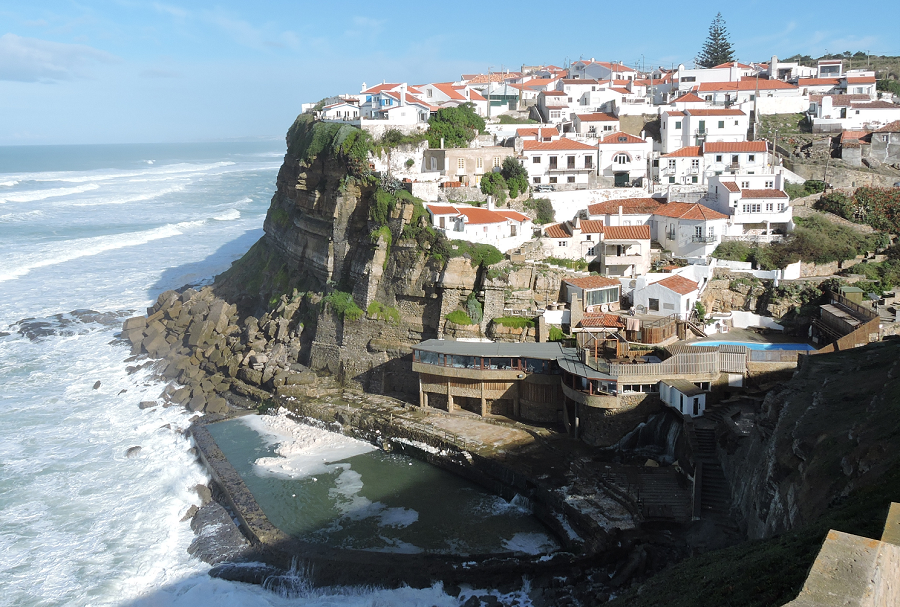 A cliff-top fishing village on the Italian Riviera? Nope, Azenhas (ah-zhane-yas) do Mar – Watermills of the Sea – is on the Portuguese Riviera. This is a magic place of fairy tale castles, thousand year-old fortresses, luxury boutique hotels, fabulous food, great wine, gorgeous beaches, and postcard-perfect scenery everywhere.
A cliff-top fishing village on the Italian Riviera? Nope, Azenhas (ah-zhane-yas) do Mar – Watermills of the Sea – is on the Portuguese Riviera. This is a magic place of fairy tale castles, thousand year-old fortresses, luxury boutique hotels, fabulous food, great wine, gorgeous beaches, and postcard-perfect scenery everywhere.
The Portuguese people are among the kindest in Europe, while Portugal is one of the safest countries in the world. Of all the planet’s First World countries, it’s hard to find one more calm and serene than here.
If you’d like a personal experience of the best of Portugal, Wheeler Expeditions can arrange it for you. (Glimpses of Our Breathtaking World #87 Photo ©Jack Wheeler)
THE SALVATION OF WESTERN CIVILIZATION ON OCTOBER 10, 732 AD
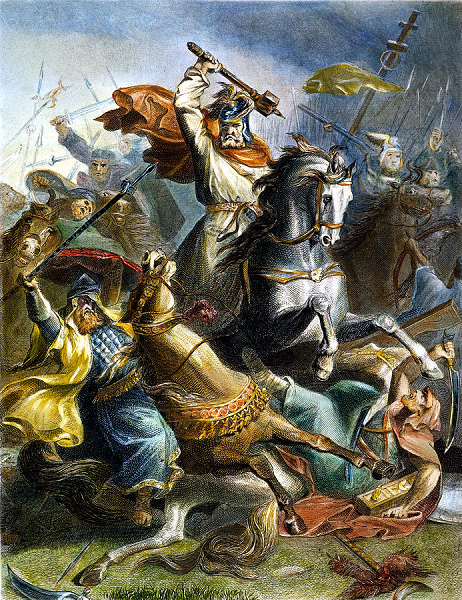 On this day, October 10th, 1,290 years ago in central France a few miles north of the town of Poitiers, two armies met with the fate of Western Civilization at stake.
On this day, October 10th, 1,290 years ago in central France a few miles north of the town of Poitiers, two armies met with the fate of Western Civilization at stake.
On a forested hill stood 30,000 Christian knights led by their king Charles Martel awaiting the onslaught of an invading horde of 60,000 Islamic Jihadis determined to extinguish Christianity from all of Europe and replace it with their Religion of the Sword.
For the last hundred years, they had exploded out of the wasteland of Arabia to conquer the Christian Middle East, Zoroastrian Persia, and all of Christian North Africa from Egypt to Morocco. For the last twenty years after crossing the Strait of Gibraltar in 711, they had swept through the Iberian Peninsula of Spain and Portugal in Islamic conquest of the ruling Christian Visigothic Kingdom.
In just six years (711-717), Islamic armies had reached the Pyrenees, the mountainous border between Spain and France. Pouring through them, for the last 15 years they had been steadily seizing more and more of Christian France – old Roman Gaul. Now Gaul was ruled by the Franks, who had been fervent Christians ever since their Founder King, Clovis (466-511), was baptized in 496.
Thus it was that on this day almost 13 centuries ago, all that stood between the Islamic horde and conquering all of Europe was this infidel army half their size that didn’t even have any cavalry – most all of their soldiers fought on foot. Surely the infidels would be annihilated as all their enemies had from Persia to the Pyrenees.
FLASHBACK FRIDAY – A GLACIER IN THE GOBI
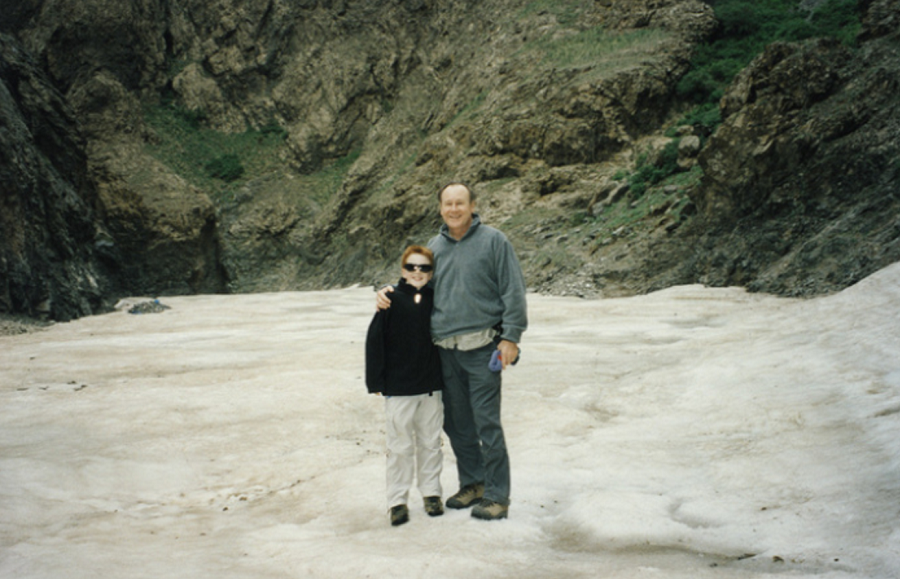 June 2002, the Vulture’s Mouth Glacier. In the deepest heart of the Gobi Desert of Mongolia, south of the Flaming Cliffs where Roy Chapman Andrews discovered dinosaur eggs in the 1920s, there is a naked spine of mountains called the Gurvan Saihan. In the Gurvan Saihan there is a deep gorge called Yol Alyn, the Vulture’s Mouth. And in the Vulture’s Mouth, there is a glacier.
June 2002, the Vulture’s Mouth Glacier. In the deepest heart of the Gobi Desert of Mongolia, south of the Flaming Cliffs where Roy Chapman Andrews discovered dinosaur eggs in the 1920s, there is a naked spine of mountains called the Gurvan Saihan. In the Gurvan Saihan there is a deep gorge called Yol Alyn, the Vulture’s Mouth. And in the Vulture’s Mouth, there is a glacier.
It is not a big glacier, the continual ice buildup of a stream that never melts even in the heat of the Gobi summer. Yet it is a glacier nonetheless, thick enough for my son Jackson and I to walk on for more than a mile. The Vulture’s Mouth Glacier is just one of a multitude of extraordinary experiences Mongolia has to offer the explorer. Are you up for exploring it with me this summer of 2023? (Glimpses of Our Breathtaking World #90 photo ©Jack Wheeler)
HALF-FULL REPORT 10/07/22
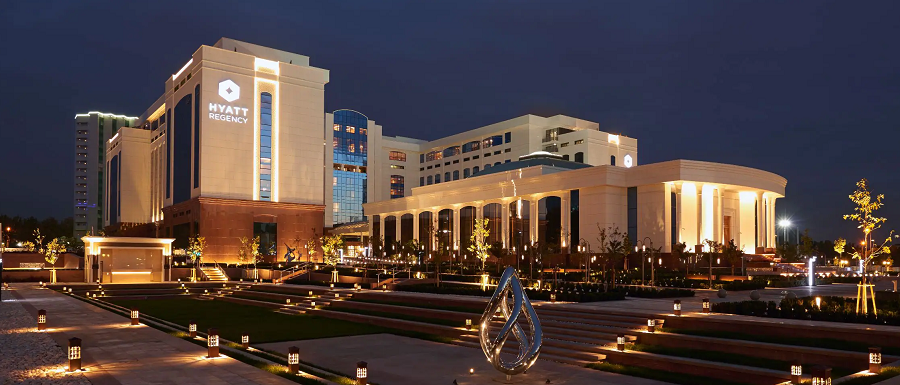 I just returned back home, jet-lagged and wigged-out from three intense weeks exploring Central Asia with your fellow TTPers.
I just returned back home, jet-lagged and wigged-out from three intense weeks exploring Central Asia with your fellow TTPers.
Frankly, after leading back-to-back explorations of Ireland, then to the Stans of West Turkestan, I’m not at all sure I can come close to Mike Ryan’s mind-blowing tour de force HFRs of 09/02, 09/09, 09/16, 09/23, and 09/30 for all last month. Mike – you raised the bar on me so high it’s out of sight!
So here goes. We’ll start with something that happened to me a few days ago at the Hyatt Regency hotel in Uzbekistan’s capital. Tashkent. I had come down to the lobby bar to get a bottle of mineral water and standing there was a young fellow I guessed to be in his 30s and looked Russian
I said hello to him with a smile, which he returned then held out his hand to shake which I did. He asked in English where I was from, and I replied, “America, I’m American,” then asked where he was from. He put his hand over his eyes and began to cry.
Wiping away the tears, he explained, “I am crying for my country, my Russia, and what is happening to it.” I rested my hand on his shoulder, looked into his eyes with heartfelt sympathy, and simply said, “I understand.” Instantly he embraced me with a bear hug.
Clearly it was something he needed. We nodded to each other in acknowledgement, and went our separate ways. The interaction lasted less than a minute but I’ll never forget it.
THE SNAKE WALLS OF KHIVA
The inner city of the ancient Silk Road oasis of Khiva has been unchanged for centuries. Surrounding 40ft-high snake walls that writhe around the city have protected it for centuries, enabling defenders to shoot, spear, and pour burning hot oil on attackers from three sides.
Khiva’s labyrinth of narrow lanes adorned with blue and aquamarine tile mosaics is a living museum for you to explore. On the Oxus or Amu Darya River in deepest Central Asia, Khiva was ancient when Alexander the Great seized it in 329 BC.
It survived the depredations of Arabs in the 8th century, Mongols in the 13th, Tamerlane in the 14th. The Khanate of Khiva continued to flourish on the Silk Road until conquered by the Russians in the 19th. Today in Uzbekistan, it remains as the best-preserved of the ancient oases of the Silk Road, yet unknown to the outside world.
It need not remain unknown to you, however. We were just here last week, and will be here again next May. Join us and make Khiva a part of your life.(Glimpses of Our Breathtaking World #226 photo ©Jack Wheeler)
BURMA’S SACRED GOLDEN ROCK
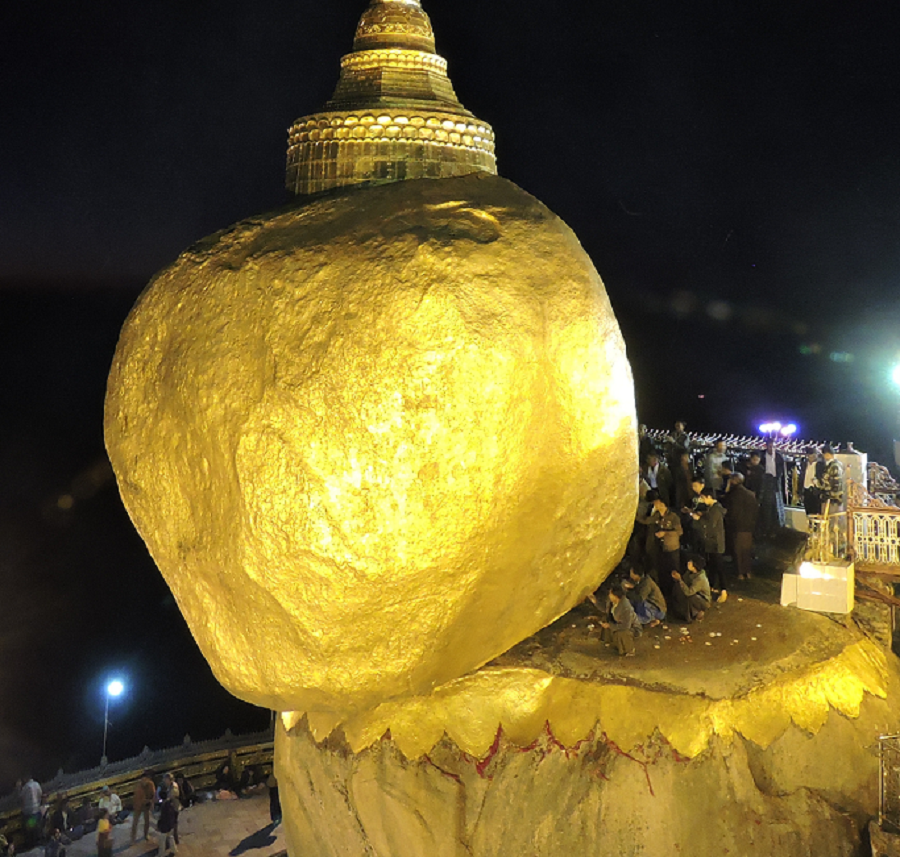 Some three hours’ drive east of Rangoon brings you to Mount Kyaiktiyo, at the top of which (3,600ft) is a gigantic granite boulder covered in gold leaf perched on the edge about to fall off. But it never does, held in place, legend says, by a strand of the Buddha’s hair put underneath it 2,500 years ago. Ever since, the Golden Rock has been a sacred pilgrimage site for the Burmese people and Buddhists around the world.
Some three hours’ drive east of Rangoon brings you to Mount Kyaiktiyo, at the top of which (3,600ft) is a gigantic granite boulder covered in gold leaf perched on the edge about to fall off. But it never does, held in place, legend says, by a strand of the Buddha’s hair put underneath it 2,500 years ago. Ever since, the Golden Rock has been a sacred pilgrimage site for the Burmese people and Buddhists around the world.
There are very few people here other than pilgrims, who devoutly pray, circumambulate the rock, and reverently place small strips of gold leaf upon it. It’s a marvelous experience to be among them. I plan to be here once again in an expedition soon – you might consider joining me. (Glimpses of Our Breathtaking World #112 photo ©Jack Wheeler)
THE MOST ANCIENT SYMBOL OF REVERENCE FOR EXISTENCE
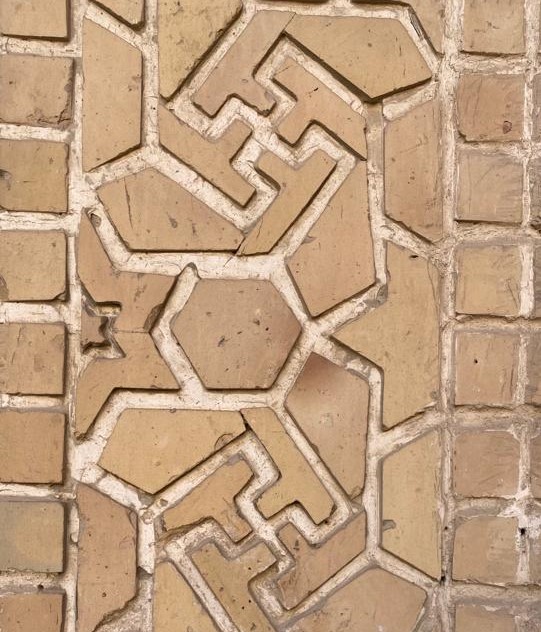 Yesterday, I found this religious decoration on the outer wall of an old mosque in the three-thousand year-old Silk Road oasis city of Bukhara. I’ve seen it in many places throughout the world, such as ancient ruins of India and Rome. Yet this is far older – it was carved onto mammoth ivory by Ice Age hunters in Ukraine 12,000 years ago.
Yesterday, I found this religious decoration on the outer wall of an old mosque in the three-thousand year-old Silk Road oasis city of Bukhara. I’ve seen it in many places throughout the world, such as ancient ruins of India and Rome. Yet this is far older – it was carved onto mammoth ivory by Ice Age hunters in Ukraine 12,000 years ago.
From time immemorial has it represented eternity, prosperity, the centeredness of all that is. Why? Look up into the sky on a clear dark night. All people have studied the heavens for eons. You could always know where you were by finding North, for the two front stars of what we call the Big Dipper point to it – always.
The Greeks called it Mega Arktikos, the Great Bear – why we call Far North the Arctic today. The ancients saw the Bear every year rotating around Celestial North – now occupied by Polaris, the North Star – through all four seasons, while all the stars in the sky circled around it every night. What do you see in this depiction of that seasonal rotation?
Yes, a Swastika -- Sanskrit for “the goodness of existence.” The most heinous perversion of symbolic art in world history was to take the symbol for the goodness of existence used by people for a dozen millennia – and still revered by Buddhists, Hindus, Moslems and many others to this day – and twist it into a symbol of horrific evil. It’s an informative lesson of history. (Glimpses of Our Breathtaking World #225 photo ©Jack Wheeler)
THE REGISTAN
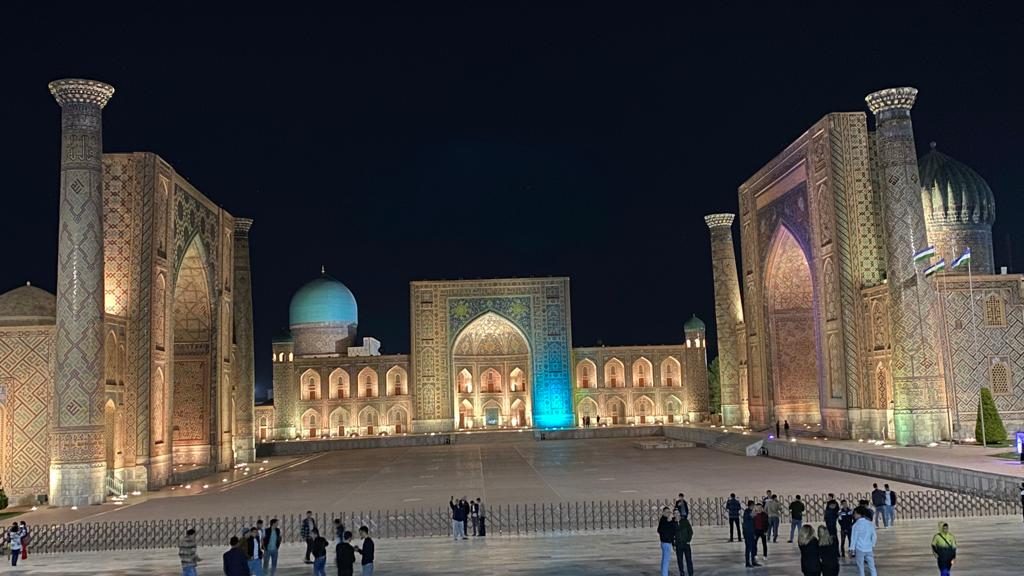 The public square of The Registan, the center of the ancient Silk Road city oasis of Samarkand, is arguably the most magnificent sight in all Central Asia. The Ulugh Beg Madrasa (college or school) on the left was built in 1420 by The Sultan Astronomer, the Sher-Dor Madrasa (1636) on the right you learned about in The Tigers of Samarkand, and most recently, last Friday’s Glimpse was about the Golden Madrasa (1660) in the center.
The public square of The Registan, the center of the ancient Silk Road city oasis of Samarkand, is arguably the most magnificent sight in all Central Asia. The Ulugh Beg Madrasa (college or school) on the left was built in 1420 by The Sultan Astronomer, the Sher-Dor Madrasa (1636) on the right you learned about in The Tigers of Samarkand, and most recently, last Friday’s Glimpse was about the Golden Madrasa (1660) in the center.
Here are all three in the splendor of entire Registan illuminated at night. It took my breath away yet again to be here once more – and will do the same for you once you stand here to make this sight a part of your life. (Glimpses of Our Breathtaking World #224 photo ©Jack Wheeler)
FLASHBACK FRIDAY: THE GOLDEN MADRASA
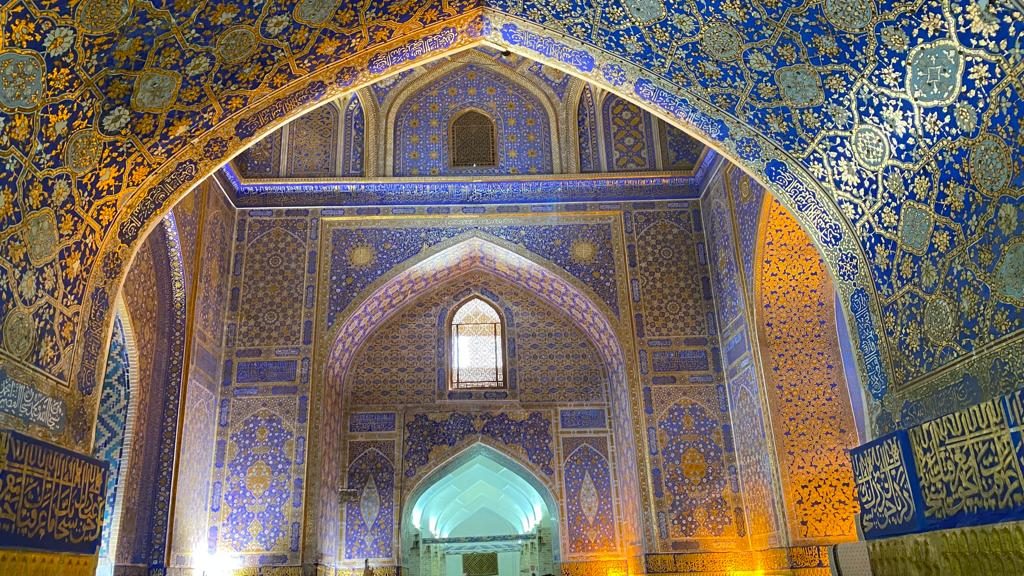 The Golden Madrasa or College of Tilla-Kori was built by Samarkand ruler Yalangtush Bakhadur in the 1650s to house and teach the best and brightest students of his realm. It stands at the center of the wondrous Registan public square complex of the Silk Road oasis city of Samarkand, known to the ancient Greeks as Marakanda.
The Golden Madrasa or College of Tilla-Kori was built by Samarkand ruler Yalangtush Bakhadur in the 1650s to house and teach the best and brightest students of his realm. It stands at the center of the wondrous Registan public square complex of the Silk Road oasis city of Samarkand, known to the ancient Greeks as Marakanda.
It was centuries old when Alexander conquered it in 329 BC. For a thousand years as Central Asia’s great entrepot on the Silk Road between China and the Mediterranean, it was a cosmopolitan center for Hinduism, Buddhism, Judaism, Zoroastrianism, and Nestorian Christianity. Incorporated into the Islamic world in the 700s, sacked by Genghiz Khan in 1220, rebuilt by the time Marco Polo in 1272 described it as “a large and splendid city,” Tamerlane made it his capital in 1370.
I was first in Samarkand to stand astonished at the Registan in 1963. Seeing it now, far more impressively preserved than in the Soviet days, made me gasp – especially how Tilla-Kori is once again lavishly decorated with gold. You’ll gasp too should you ever be fortunate enough to come here. (Glimpses of Our Breathtaking World #223 photo ©Jack Wheeler)
THE EYELASH AT DAWN
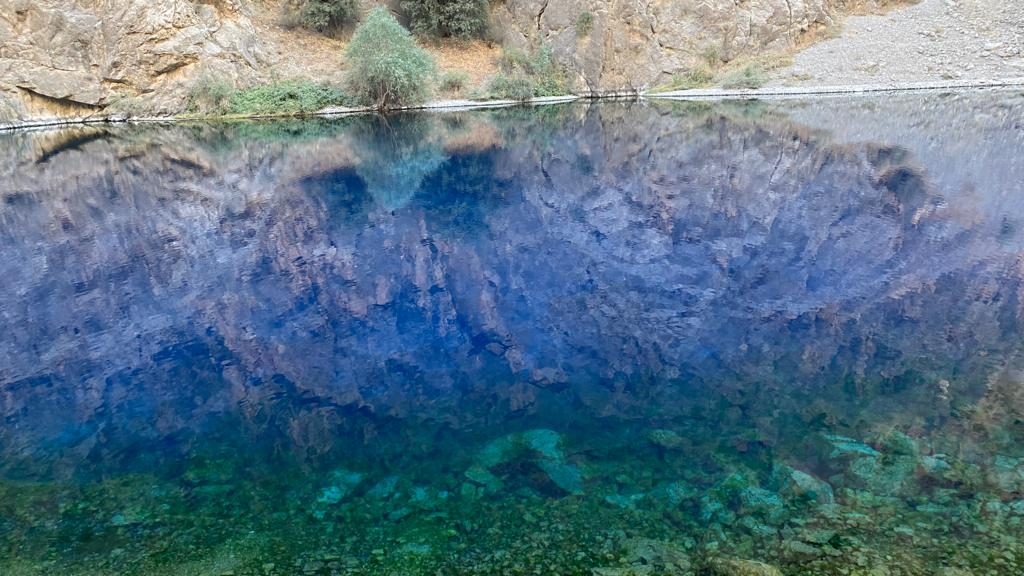 The first of The Seven Pearls of Shing is called Mijgon or The Eyelash. It’s at 5,300 ft in the Fann Mountains of Western Tajikistan. At dawn, the air is still and crystal clear as is the water. The surface of the lake becomes a mesmerising mirror with the early light reflecting the vertical cliffs above while penetrating to the translucent lake bed below. It is an epic example of the boundless beauty of our world. (Glimpses of Our Breathtaking World #222 photo ©Jack Wheeler)
The first of The Seven Pearls of Shing is called Mijgon or The Eyelash. It’s at 5,300 ft in the Fann Mountains of Western Tajikistan. At dawn, the air is still and crystal clear as is the water. The surface of the lake becomes a mesmerising mirror with the early light reflecting the vertical cliffs above while penetrating to the translucent lake bed below. It is an epic example of the boundless beauty of our world. (Glimpses of Our Breathtaking World #222 photo ©Jack Wheeler)
THE EMPRESS WHO LOVED ACHILLES
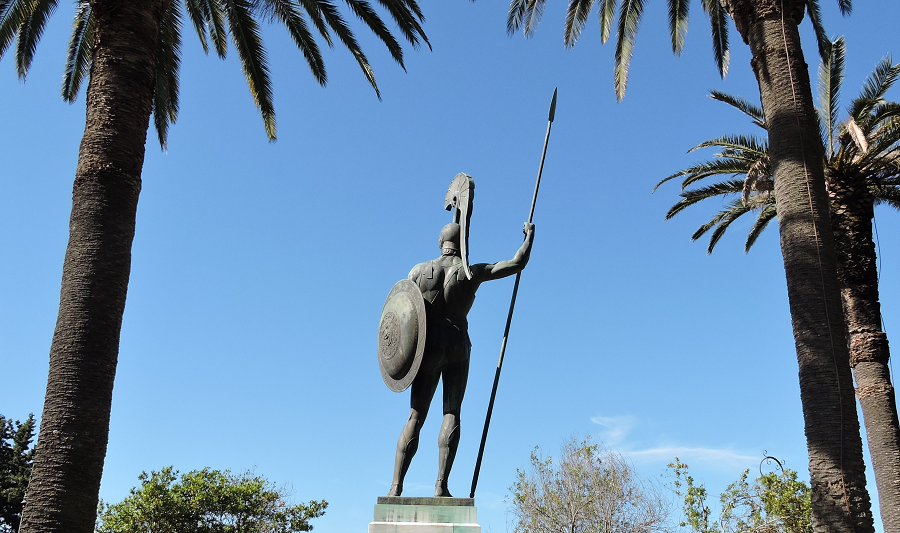 On a mountain top on the island of Corfu in 1890, Empress Elizabeth of Austria built a magnificent marble palace called the Achilleion, dedicated to her hero, the legendary Achilles of Homer’s Iliad. Here she retreated from the world, amidst the palace’s gorgeous gardens overlooking the Mediterranean abundant with larger-than-life statues of her ideal man, “who despised all mortals and did not fear even the gods."
On a mountain top on the island of Corfu in 1890, Empress Elizabeth of Austria built a magnificent marble palace called the Achilleion, dedicated to her hero, the legendary Achilles of Homer’s Iliad. Here she retreated from the world, amidst the palace’s gorgeous gardens overlooking the Mediterranean abundant with larger-than-life statues of her ideal man, “who despised all mortals and did not fear even the gods."
All of Europe knew her as Sisi. Adored by her husband Emperor Franz Joseph I, renowned as the most beautiful – and most beloved -- woman of her time, she was Austria’s Empress for 44 years. Her life ended tragically, murdered at random by an anarchist who wanted to “kill a royal.”
The Achilleion today is maintained immaculately in all its original glory as a museum you can visit. Don’t pass the chance to see it for yourself. (Glimpses of Our Breathtaking World #76 photo ©Jack Wheeler)
ADAM AND EVE AND AMANITA
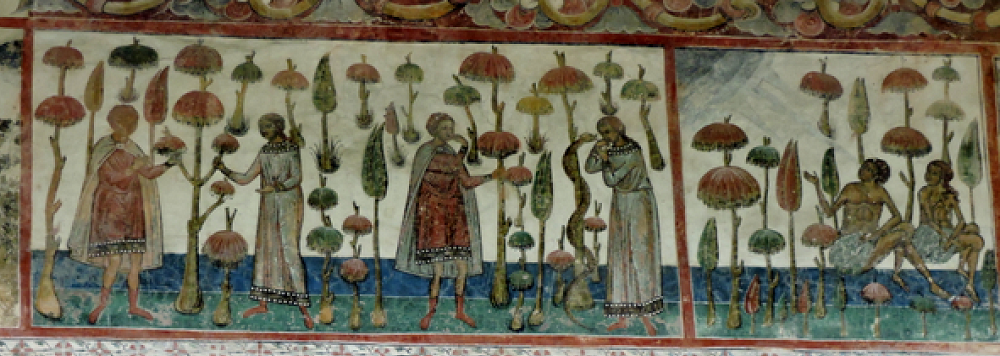 Glimpse (#98) was the back panel of the Painted Monastery of Voronet. Here you see a side panel fresco of Adam and Eve tempted by the serpent in the Garden of Eden.
Glimpse (#98) was the back panel of the Painted Monastery of Voronet. Here you see a side panel fresco of Adam and Eve tempted by the serpent in the Garden of Eden.
Startlingly, however, the couple is not eating an apple at the serpent’s behest but a hallucinogenic Amanita muscaria mushroom – recognizable as the classic Disney cartoon mushroom with the red cap and white spots. Sounds hard to believe but there it is, 532 years old. It’s the center panel of a triptych, the left panel has Adam and Eve each grasping an Amanita stalk, the right panel knowing they are naked covering themselves with fig leaves.
In all three panels, the Garden of Eden is an Amanita garden. This is devotional art by deeply devout Christians over 500 years ago. What’s going on? Amanita muscaria is commonly found in the Carpathian forests to this day. Did the Voronet painters engage in Amanita ceremonies giving them visions they used to paint their churches? Did those visions make them decide it was Amanita and not an apple that Eve ate?
From time immemorial, people have used hallucinogenic plants to commune with the spirit world. Researchers have shown that Soma, the god instantiated on earth in the earliest Hindu texts, is Amanita muscaria. And they’ve made another connection. Google Amanita muscaria + Santa Claus to find out. Better be sitting down. (Glimpses of Our Breathtaking World #99 photo ©Jack Wheeler)
FLASHBACK FRIDAY: A REAL RUSSIAN CHURCH
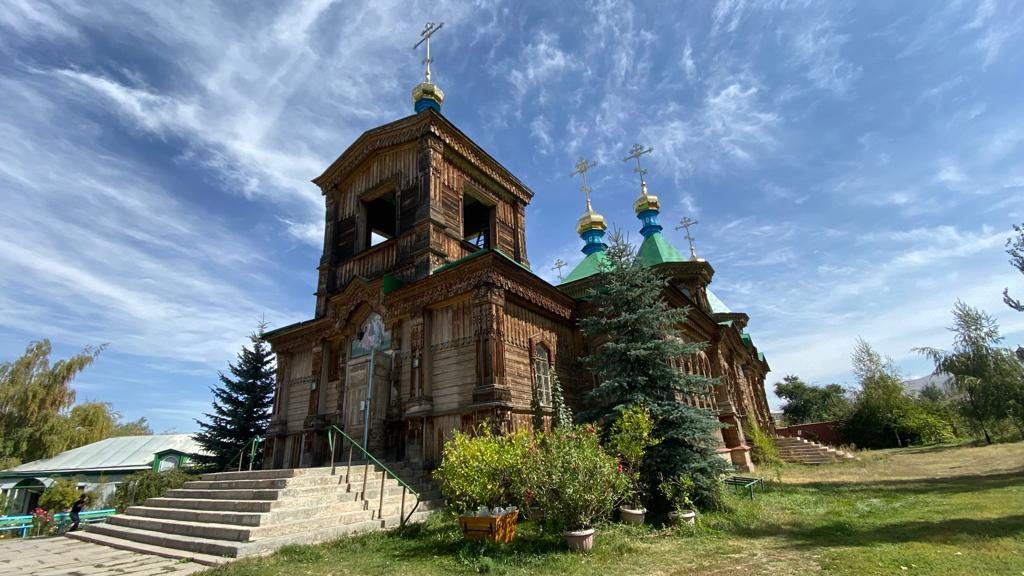 This is the wooden Russian Orthodox Church in Karakol, Kyrgyzstan. I was here years ago and now again today. It was built in the 1890s when Karakol was a garrison town in the furthermost reaches of the Russian Imperial Empire with China just on the other side of Tien Shan Mountains. In the atheist/communist Soviet Union it was used variously as a school, gymnasium, and warehouse, anything but a church.
This is the wooden Russian Orthodox Church in Karakol, Kyrgyzstan. I was here years ago and now again today. It was built in the 1890s when Karakol was a garrison town in the furthermost reaches of the Russian Imperial Empire with China just on the other side of Tien Shan Mountains. In the atheist/communist Soviet Union it was used variously as a school, gymnasium, and warehouse, anything but a church.
After Kyrgyzstan gained its independence with the collapse of the Soviet Union, it was lovingly restored by the people of Karakol. All the various ethnicities comprising Karakol are welcome here – Christian Russians and Christian Kyrgyz, Uighur Moslem refugees escaping Chicom China, ethnic Han Chinese Moslems called Dungans escaping for the same reason, Buddhist and pagan Kazakhs. The interior is lavishly decorated with Christian art and paintings of Christian saints – no Islamic or Buddhist or any other religious art, just Christian. Yet all are welcome to pray in this haven of refuge and peace in their own way.
This is a Russian Church very distinct from those controlled by Moscow run by the Kremlin as a propaganda arm of the KGB/FSB. It is a real Russian Christian Church instead. Come here to feel to the spiritual serenity for yourself. (Glimpses of Our Breathtaking World #221 photo ©Jack Wheeler)
THE HANGING MONASTERY
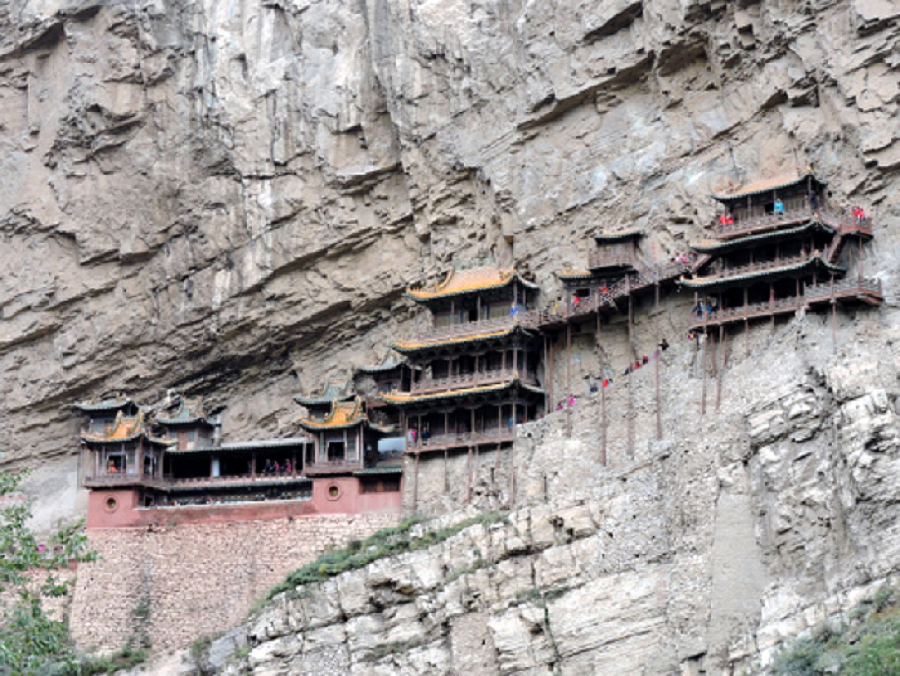 The architectural wonder of the Hanging Monastery was built on a vertical cliff face by the Tuoba people of Inner Mongolia over 1,500 years ago (in the 490s). Devout Buddhists and brilliant engineers, they defied gravity by inserting huge wooden crossbeams deep into the cliff to suspend the monastery’s temples, shrines, and monks’ living quarters, connected with bridges, corridors, and boardwalks, out into space.
The architectural wonder of the Hanging Monastery was built on a vertical cliff face by the Tuoba people of Inner Mongolia over 1,500 years ago (in the 490s). Devout Buddhists and brilliant engineers, they defied gravity by inserting huge wooden crossbeams deep into the cliff to suspend the monastery’s temples, shrines, and monks’ living quarters, connected with bridges, corridors, and boardwalks, out into space.
Liao Mongols in the 900s rebuilt and sustained it, and it has been carefully refurbished and restored in the centuries since. While it remains primarily Buddhist with statues and depictions of Sakyamuni (the historical Buddha of 5th century BC) and Maitreya (the future Buddha), the monks welcome reverence to Taoism and its founder Lao Tzu (4th century BC), as well as Confucius (551-479 BC). Thus you also see shrines and statues of them like nowhere else.
It is a unique and inspiring experience to be here. We’ll be here again in our next exploration of Inner Mongolia sometime soon. ((Glimpses of Our Breathtaking World #116 photo ©Jack Wheeler)
WOULD YOU BELIEVE THIS IS A CITY IN CENTRAL ASIA?
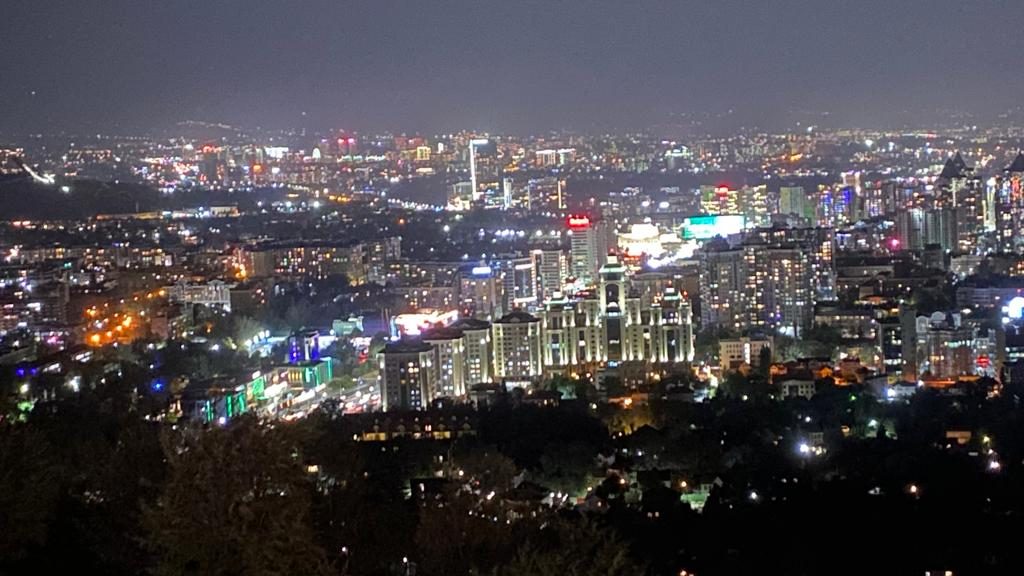 This is Almaty, the largest city in Kazakhstan with over one million people. Originally named Alma Ata or Father of Apples, as here in the western foothills of the Tien Shan mountains is where apples were first domesticated and cultivated.
This is Almaty, the largest city in Kazakhstan with over one million people. Originally named Alma Ata or Father of Apples, as here in the western foothills of the Tien Shan mountains is where apples were first domesticated and cultivated.
Almaty is a thriving prosperous city as the financial/economic- but not political- capital of independent Kazakhstan. And but a stone’s throw away from the magnificent snow-clad Tien Shan, a trekker’s paradise in the spring, summer, and fall, a skier’s in the winter. It’s a modern, spotlessly clean city with gorgeous parks and flower gardens- and there’s a terrific Irish Pub flowing with Guinness. What more could you want? (Glimpses of Our Breathtaking World #220 photo ©Jack Wheeler)
THE CITY OF ALMATY
 This is Almaty, the largest city in Kazakhstan with over one million people. Originally named Alma Ata or Father of Apples, as here in the western foothills of the Tien Shan mountains is where apples were first domesticated and cultivated.
This is Almaty, the largest city in Kazakhstan with over one million people. Originally named Alma Ata or Father of Apples, as here in the western foothills of the Tien Shan mountains is where apples were first domesticated and cultivated.
Almaty is a thriving prosperous city as the financial/economic- but not political- capital of independent Kazakhstan. And but a stone’s throw away from the magnificent snow-clad Tien Shan, a trekker’s paradise in the spring, summer, and fall, a skier’s in the winter. It’s a modern, spotlessly clean city with gorgeous parks and flower gardens- and there’s a terrific Irish Pub flowing with Guinness. What more could you want? (Glimpses of Our Breathtaking World #220 photo ©Jack Wheeler)
THE BORU HARP
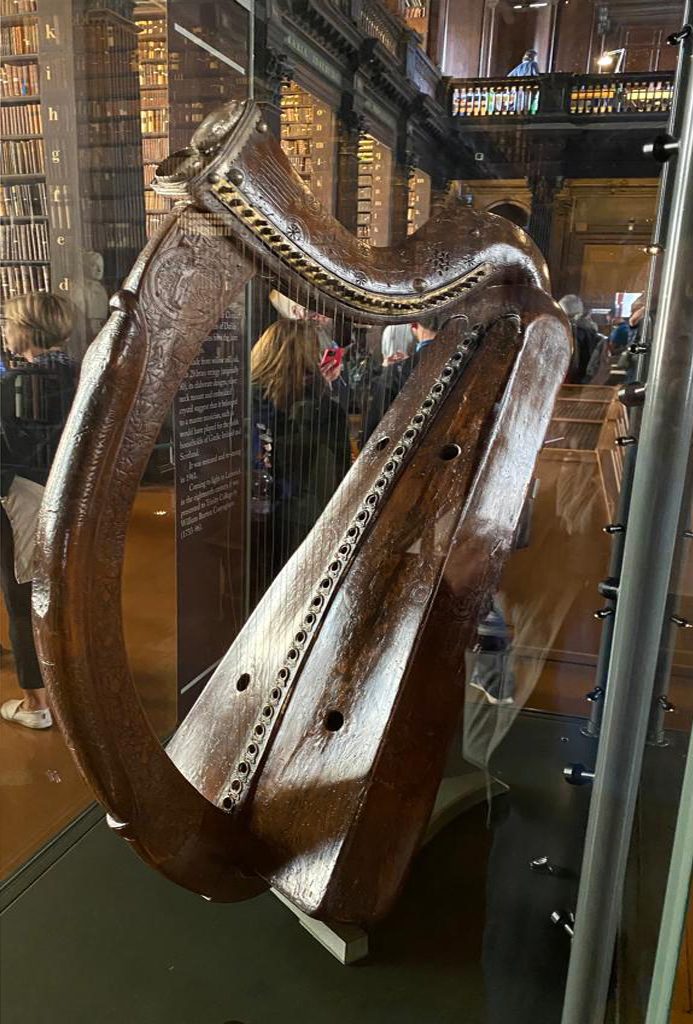 The Boru Harp, attributed to the one and only High King of the entire island of Ireland, Brian Boru (941-1014), is the only musical instrument that is the national symbol of a country - the Republic of Ireland. It is also on the label of Guinness beer. Beautifully and exquisitely made, the Boru Harp is on display in the famous Long Room of the Trinity College Library in Dublin. You’ll experience a sense of awe when you see it for yourself. (Glimpses of Our Breathtaking World #219 photo ©Jack Wheeler)
The Boru Harp, attributed to the one and only High King of the entire island of Ireland, Brian Boru (941-1014), is the only musical instrument that is the national symbol of a country - the Republic of Ireland. It is also on the label of Guinness beer. Beautifully and exquisitely made, the Boru Harp is on display in the famous Long Room of the Trinity College Library in Dublin. You’ll experience a sense of awe when you see it for yourself. (Glimpses of Our Breathtaking World #219 photo ©Jack Wheeler)

